Taking good landscape photos can be challenging. How often have you seen a beautiful scene, but when you photograph it with your iPhone the image doesn’t do it justice? And how many of us actually live in stunning scenery anyway? Luckily there are some simple yet highly effective techniques for creating amazing landscape photography even in the most ordinary locations. In this tutorial, you’ll discover 10 tips for capturing breathtaking landscape pictures with your iPhone, no matter where you live.
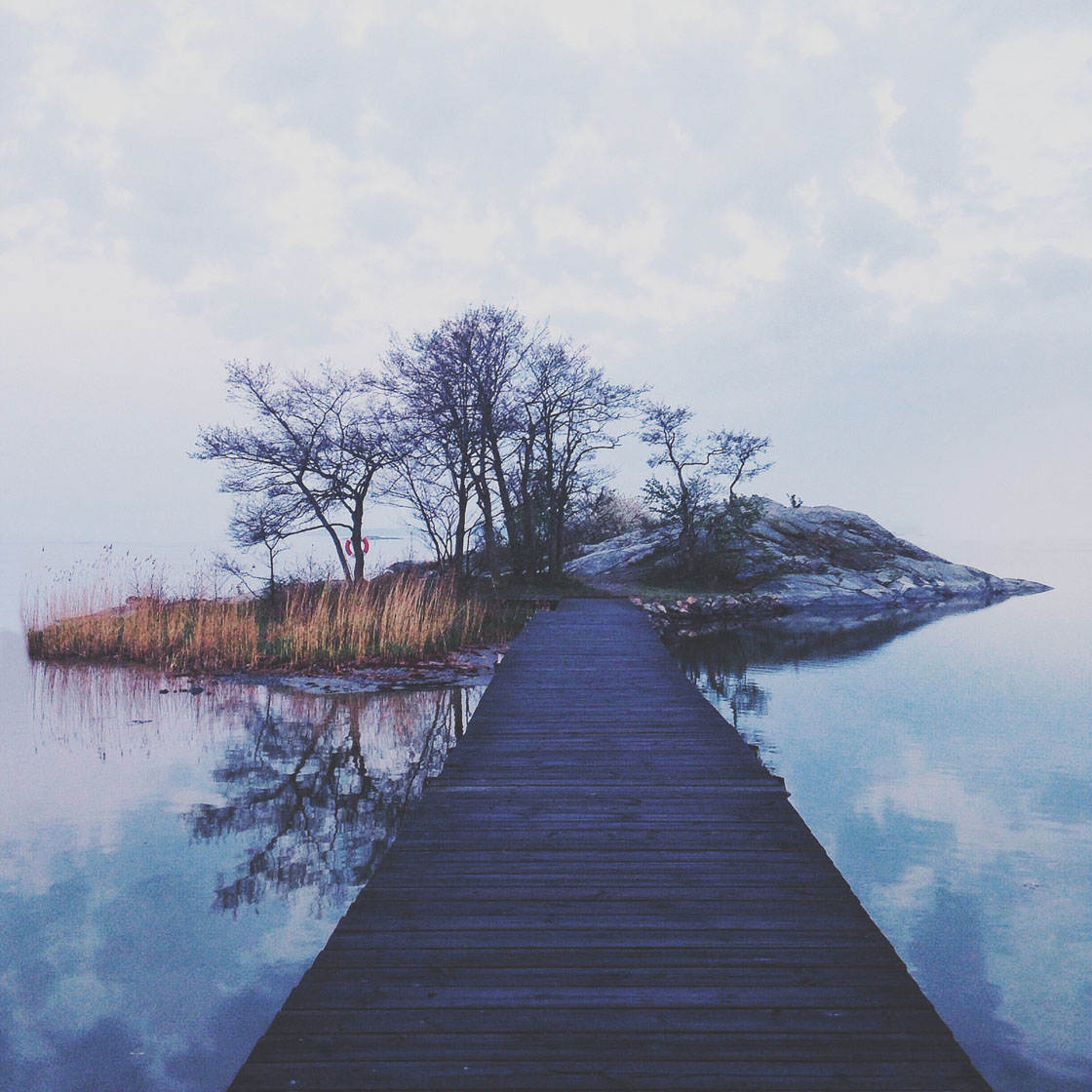
1. Explore Your Region
The most obvious thing you need for landscape photography is a landscape! I often hear people say that they can’t shoot landscape photos because they don’t live in a place with amazing mountains, crystal clear lakes, beautiful waterfalls, etc.
But you don’t need to live in areas of stunning natural beauty to take great landscape photos. No matter where you are, if you take the time to explore your region you’ll find some excellent opportunities for taking amazing landscape photos with your iPhone.
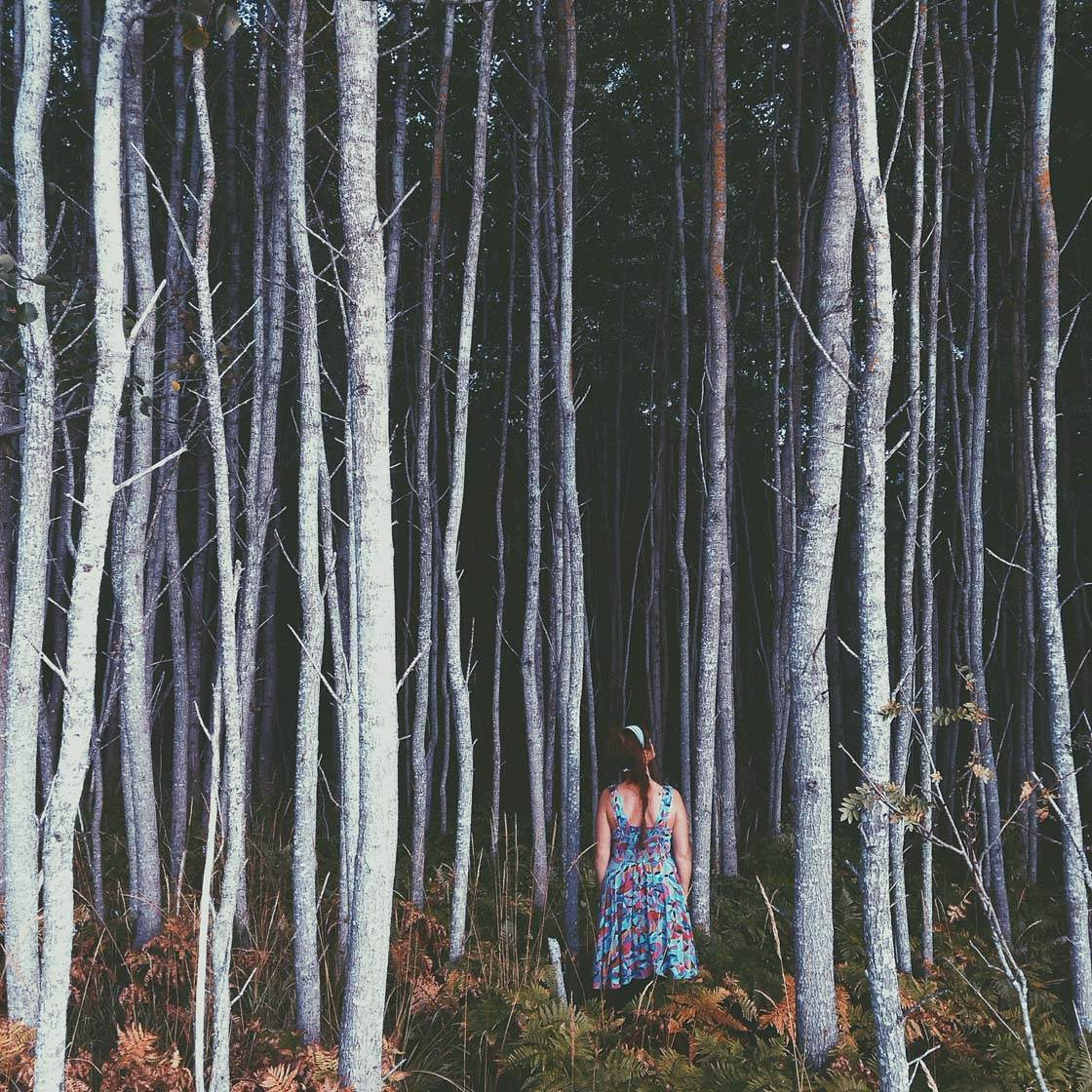
Although I live in an urban area of Stockholm, there are lots of areas surrounding the city where I can find natural landscapes to photograph.
Even if you live in the countryside, you’ll probably need to do some exploring of your local area to find the best scenes and natural features for your photography.
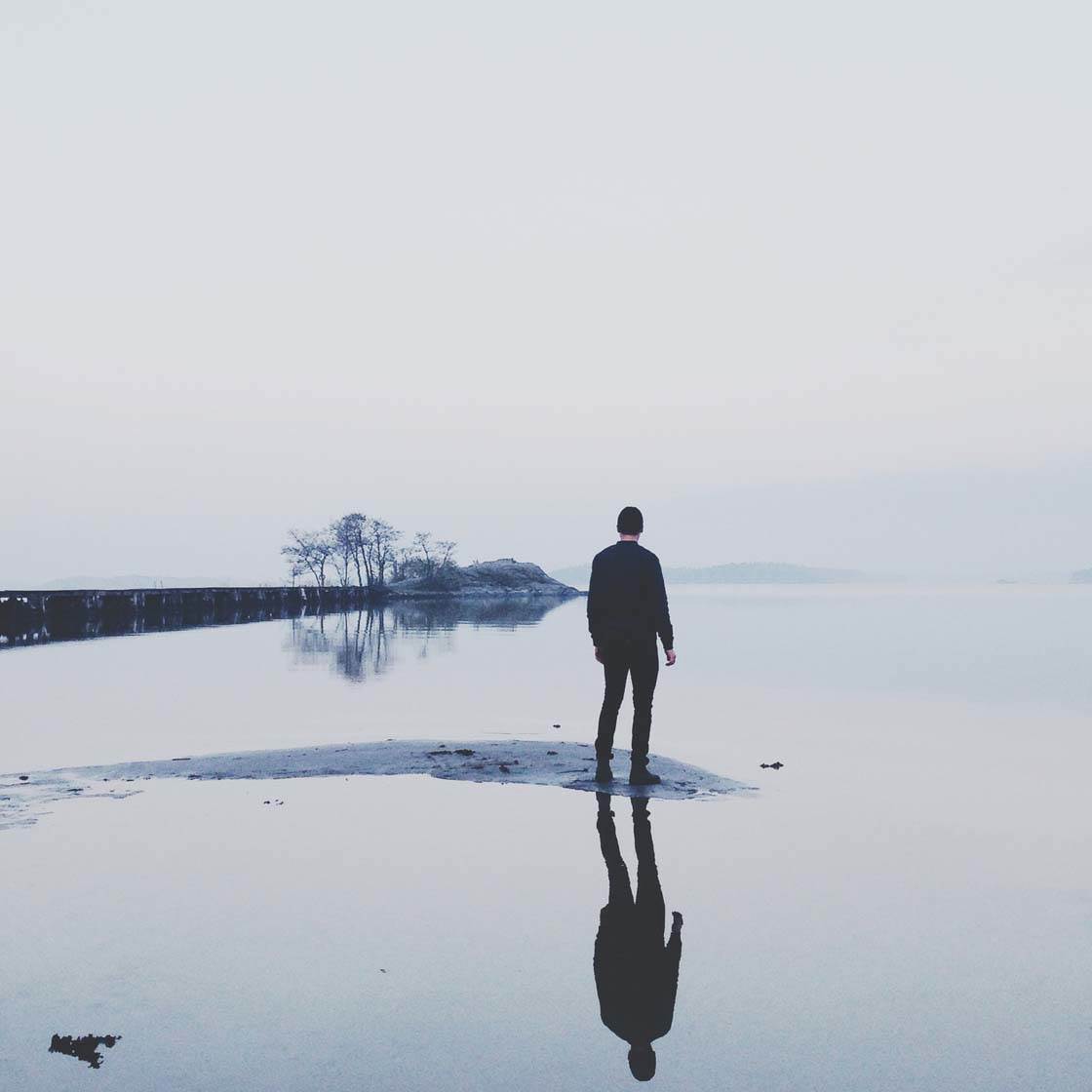
The problem I find is that the nature in my region isn’t that impressive compared to other parts of the country, and indeed the rest of the world… at least not at first glance.
But if you take the time to explore and really look at everything around you, you’ll always find beautiful places to shoot, even in the most ordinary landscapes.

I explore my surroundings whenever I can. I travel by bike or car, constantly searching for a good location. I even use Google and maps to find interesting sites and locations.
Not far from my city I find hundreds of small lakes, seascapes, mighty forests and lots of farmland. The trick is to understand that you don’t need a vast and dramatic landscape to take interesting photos outdoors.
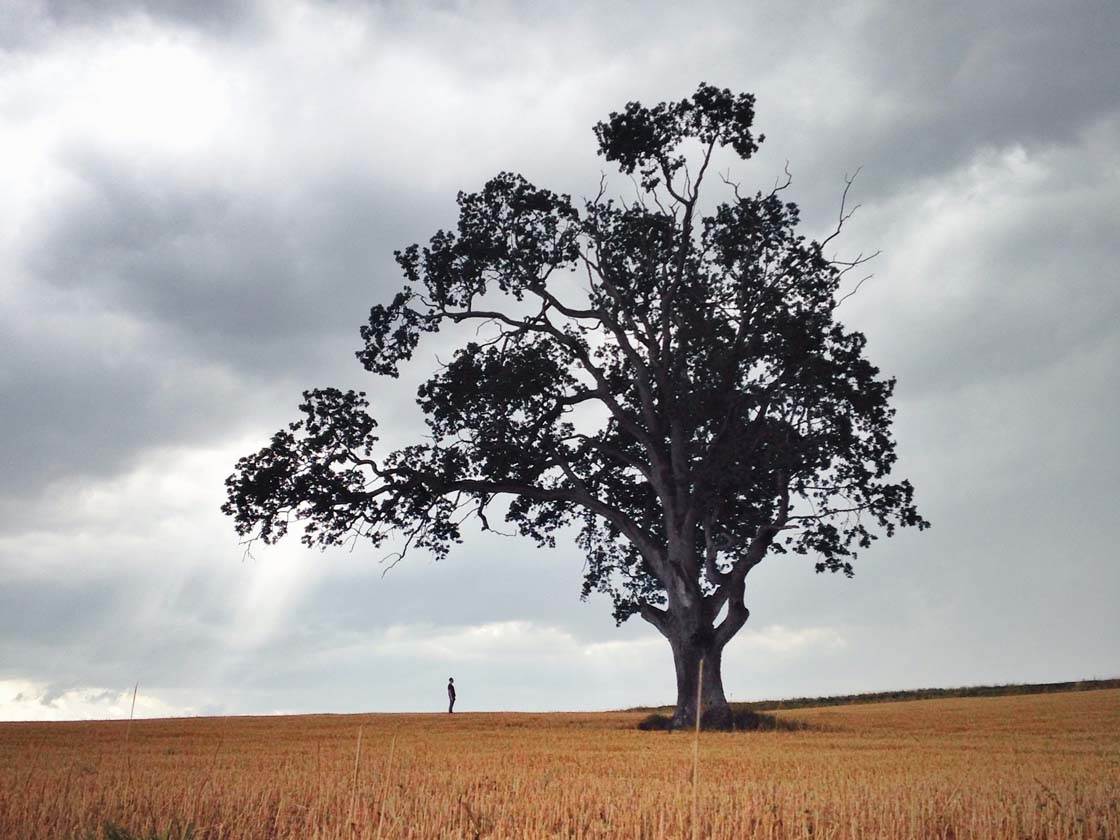
A simple field that includes a lone tree or a person will make for dramatic landscape photography as long as you frame it with a little thought. You can even take beautiful landscape shots in city parks if you compose your shot carefully.
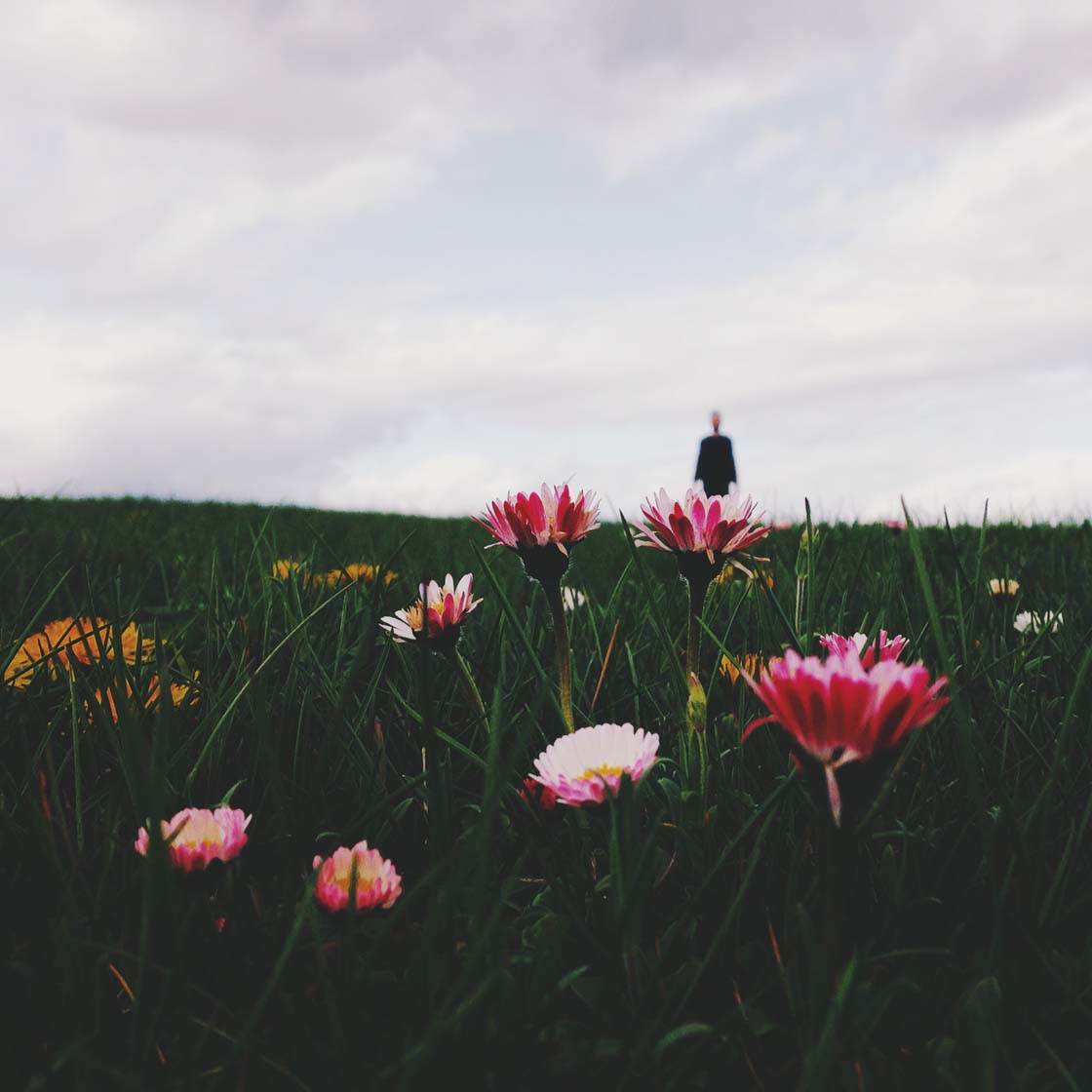
So wherever you live, and whatever your motivation for wanting to take landscape photos, the first step is to get out and explore your surroundings. If you don’t do this, you’ll be missing out on so many amazing photo opportunities!
2. Include A Focal Point
A landscape photo without a main subject or focal point rarely turns out well. The problem with shooting landscapes is that they often look amazing in real life, but when you capture them in a photo the image doesn’t look that impressive.
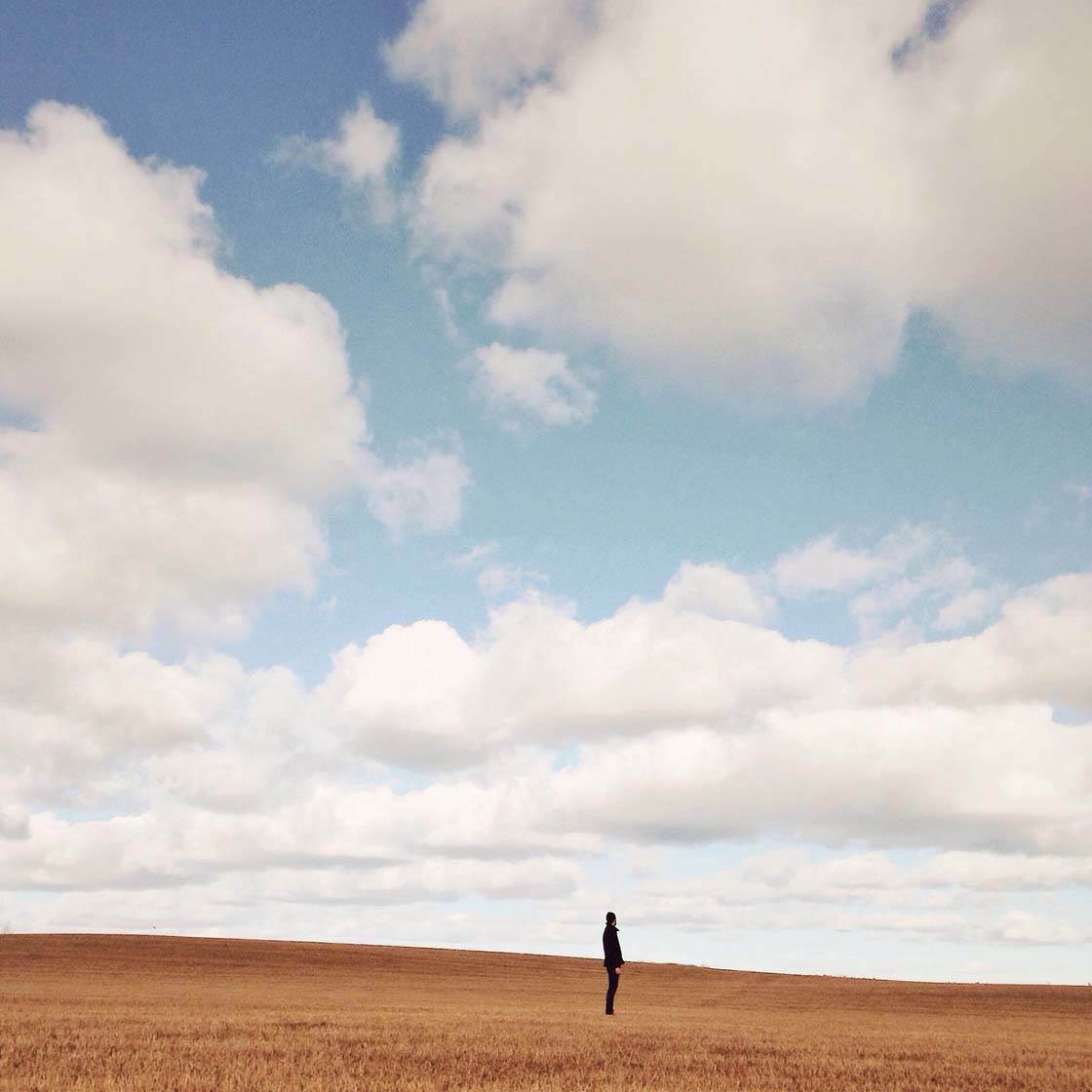
One of the best ways to make a landscape photo more interesting is to include a main subject to act as a focal point within the scene. This is especially true with landscapes that don’t have any dominating features, such as the plain field in the photo above.
A focal point provides the viewer with a place for their eye to rest once they’ve looked around the rest of the scene. It helps to make the picture more complete and more satisfying to look at.
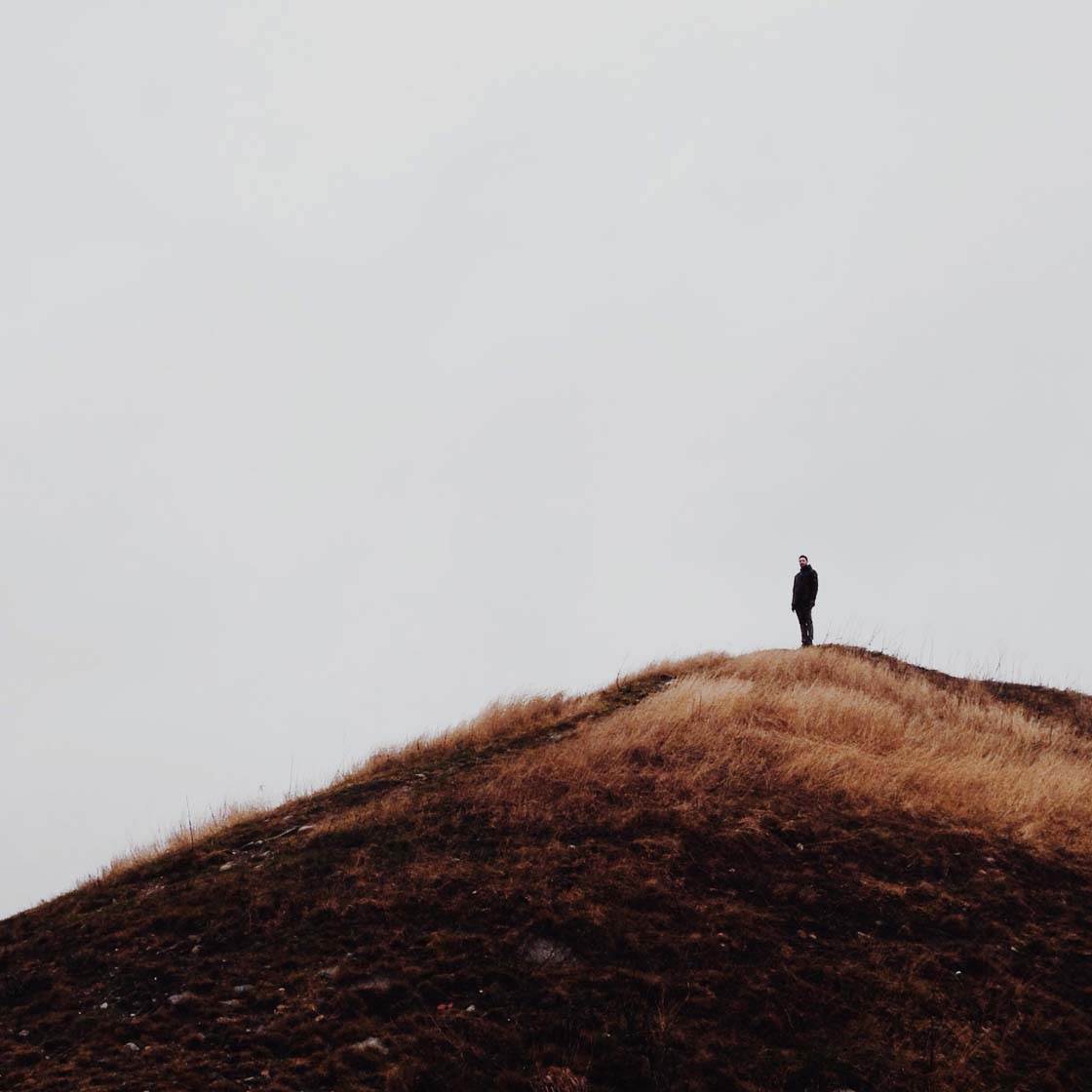
You could use anything as a focal point, as long as it stands out and catches the viewer’s attention. Common objects to use as a focal point in landscape photos are trees, buildings and people, but you could use any object you want.
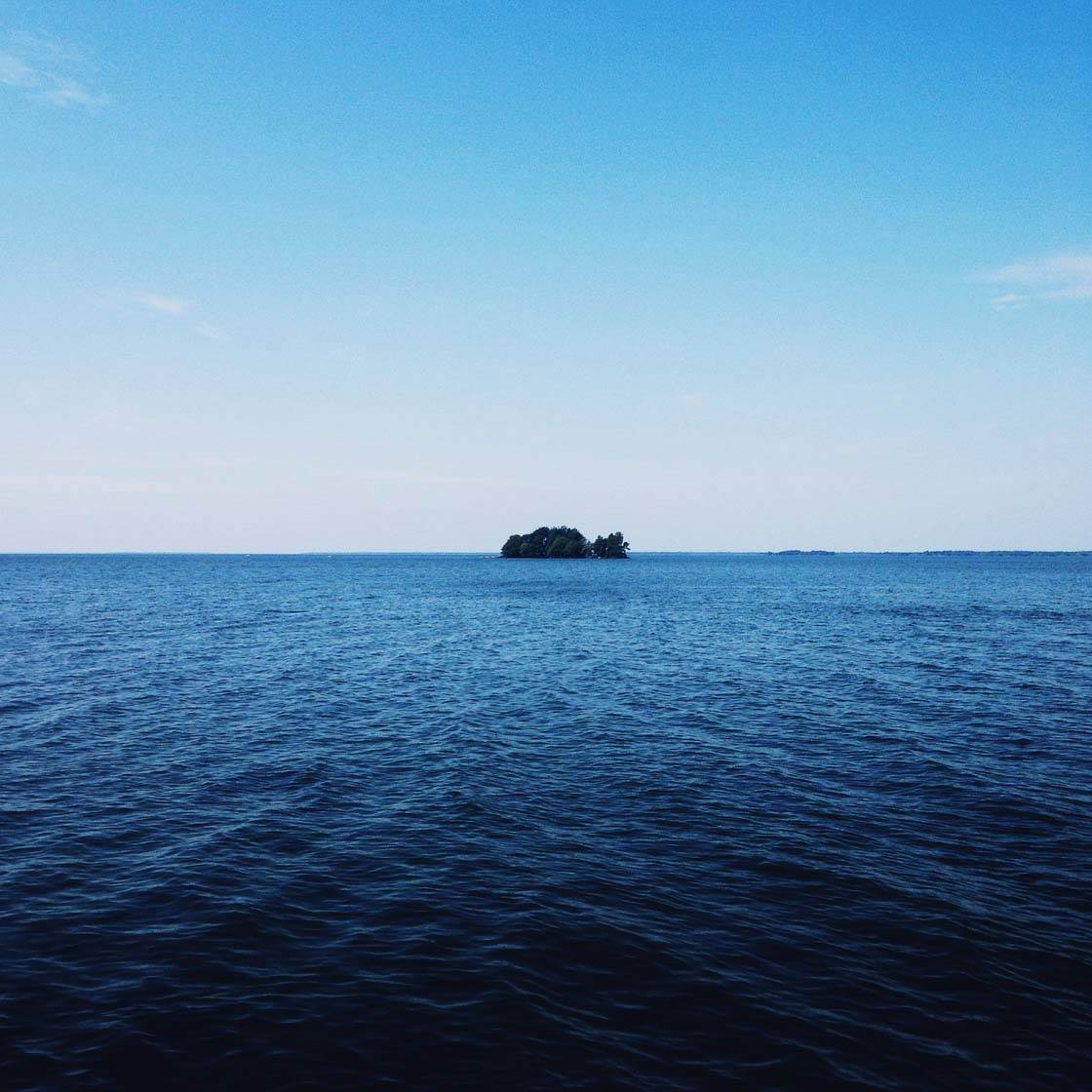
In the photo above, the small island serves as a focal point. If I’d composed the shot a bit to the left or a bit to the right, my photo would have only contained sea and sky. Without the focal point it wouldn’t hold the viewer’s interest for long.
But the island creates a point in the scene that immediately draws your eye into the photo. It also adds a storytelling element that might make the viewer wonder what’s on that island and how they would get there.
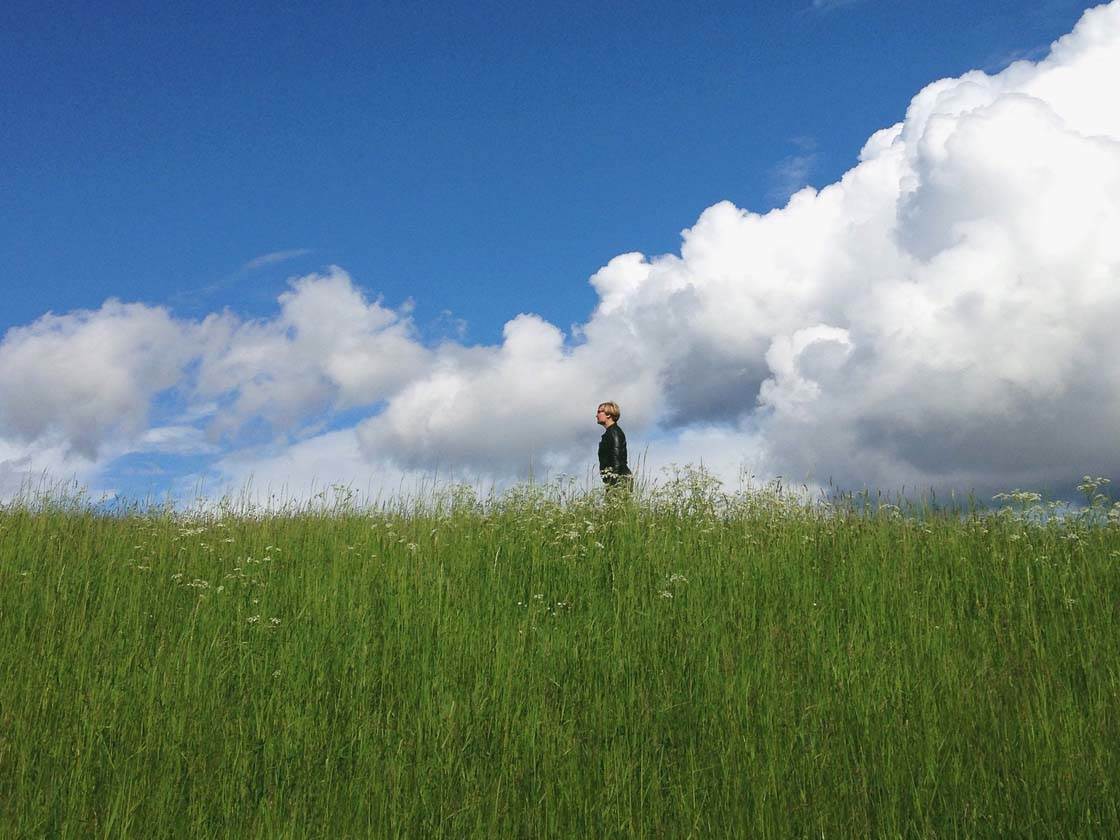
Many of my landscape photos are taken in a flat field of grass or crops, or on a small hill. But by carefully composing the shot and including an interesting focal point, I manage to make something out of the most ordinary outdoor scenes.
3. Create Simple Compositions
When you first start shooting landscapes, you might end up with very busy compositions. Landscapes can include a lot of different features, both natural and man-made, and when you have too many competing elements it can confuse the viewer.
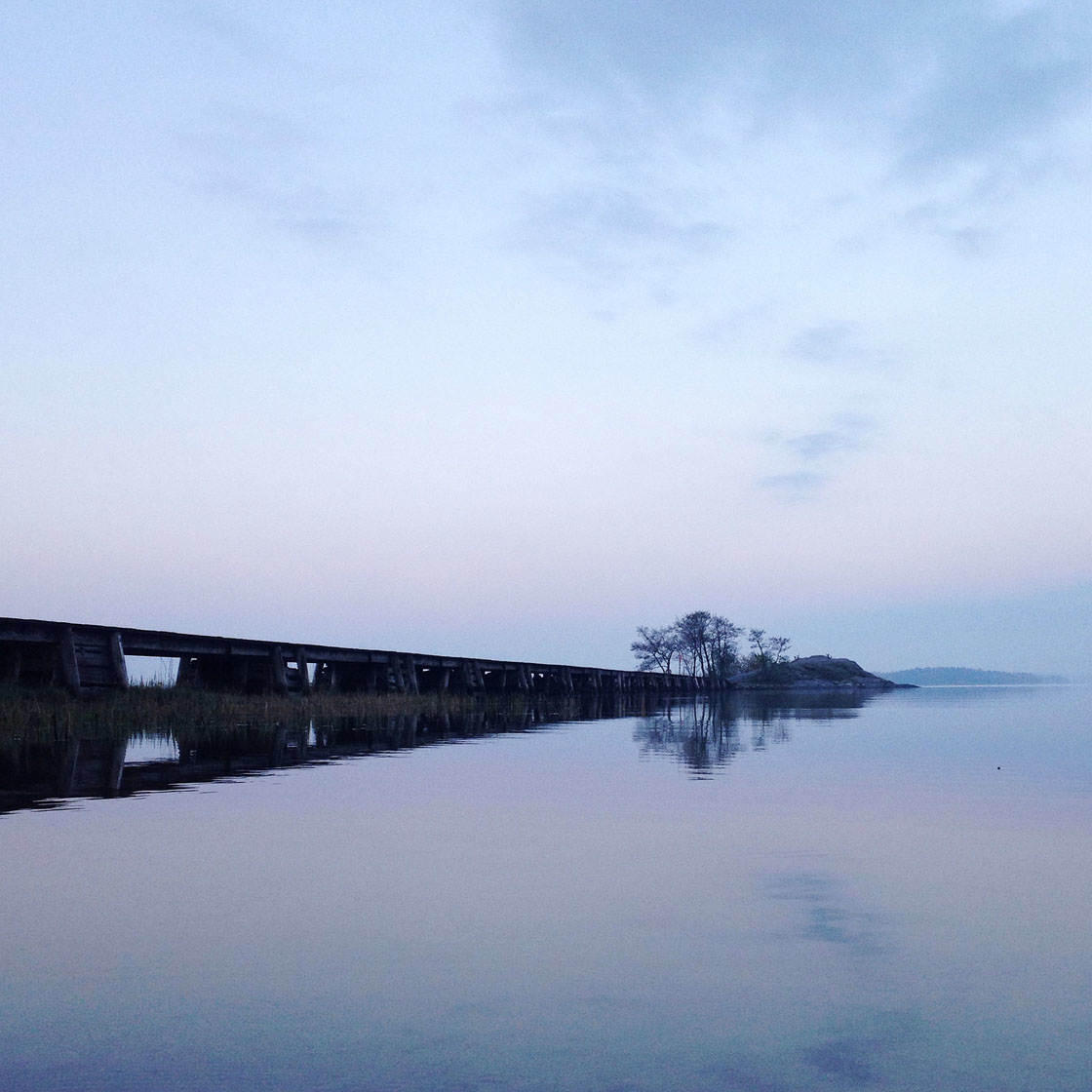
If you take a few minutes to explore the location, it’s likely that you’ll find a better vantage point that will allow you to create a cleaner and more minimal composition. This allows you to place more emphasis on your main subject within the landscape.
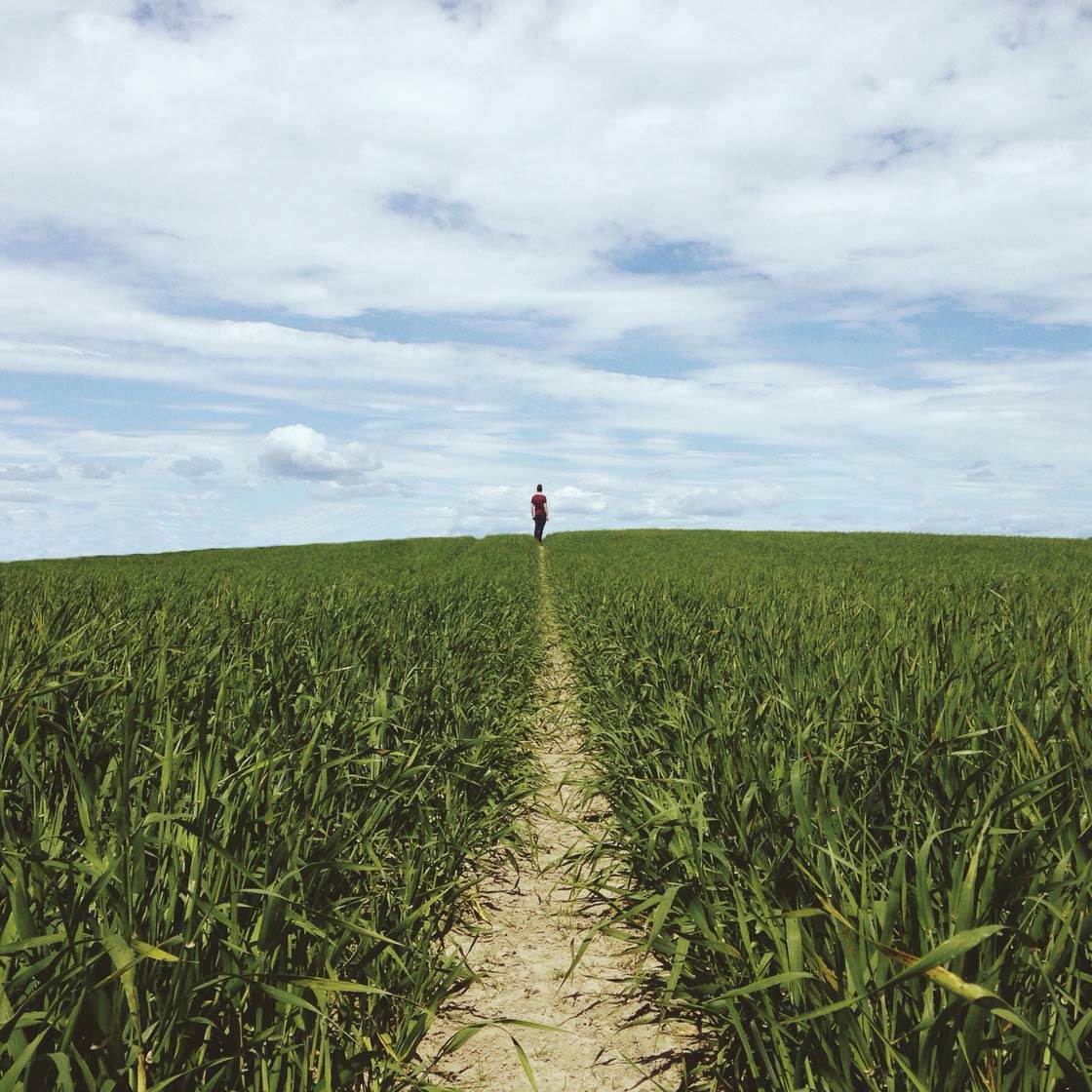
Composition is very important in landscape photography, and you shouldn’t rush this step. Once you find a scene that you’d like to photograph and you’ve chosen your main subject or point of interest, take a few minutes to find the best viewpoint to shoot from.

Poor composition can lead to weak photos that no one remembers. Keeping the composition simple so that your main subject is clearly visible is the best way to create powerful landscape photos with a strong focal point.
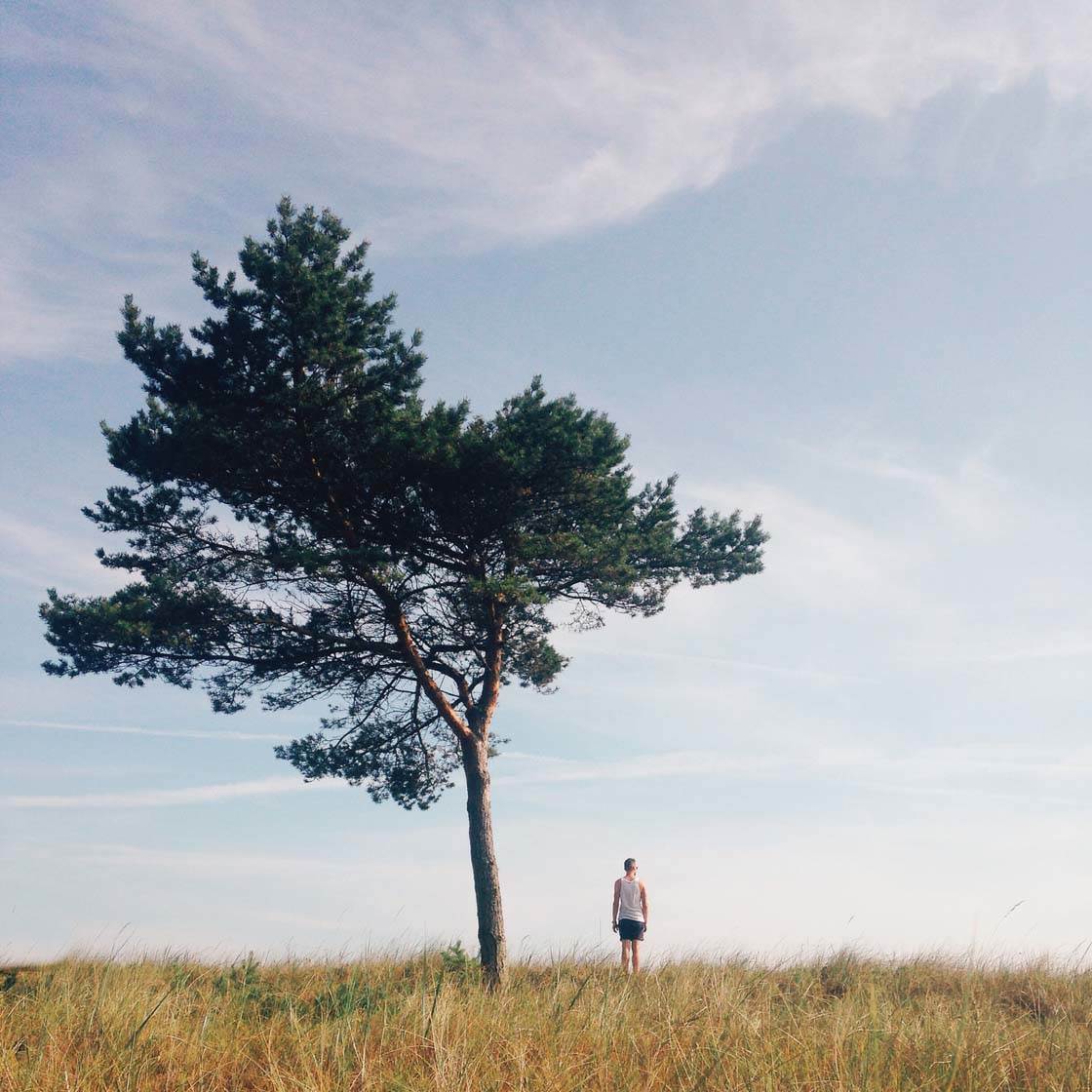
Try to compose your shot to eliminate any unwanted parts of the scene. Get closer if necessary, so that distracting elements don’t appear in the frame.
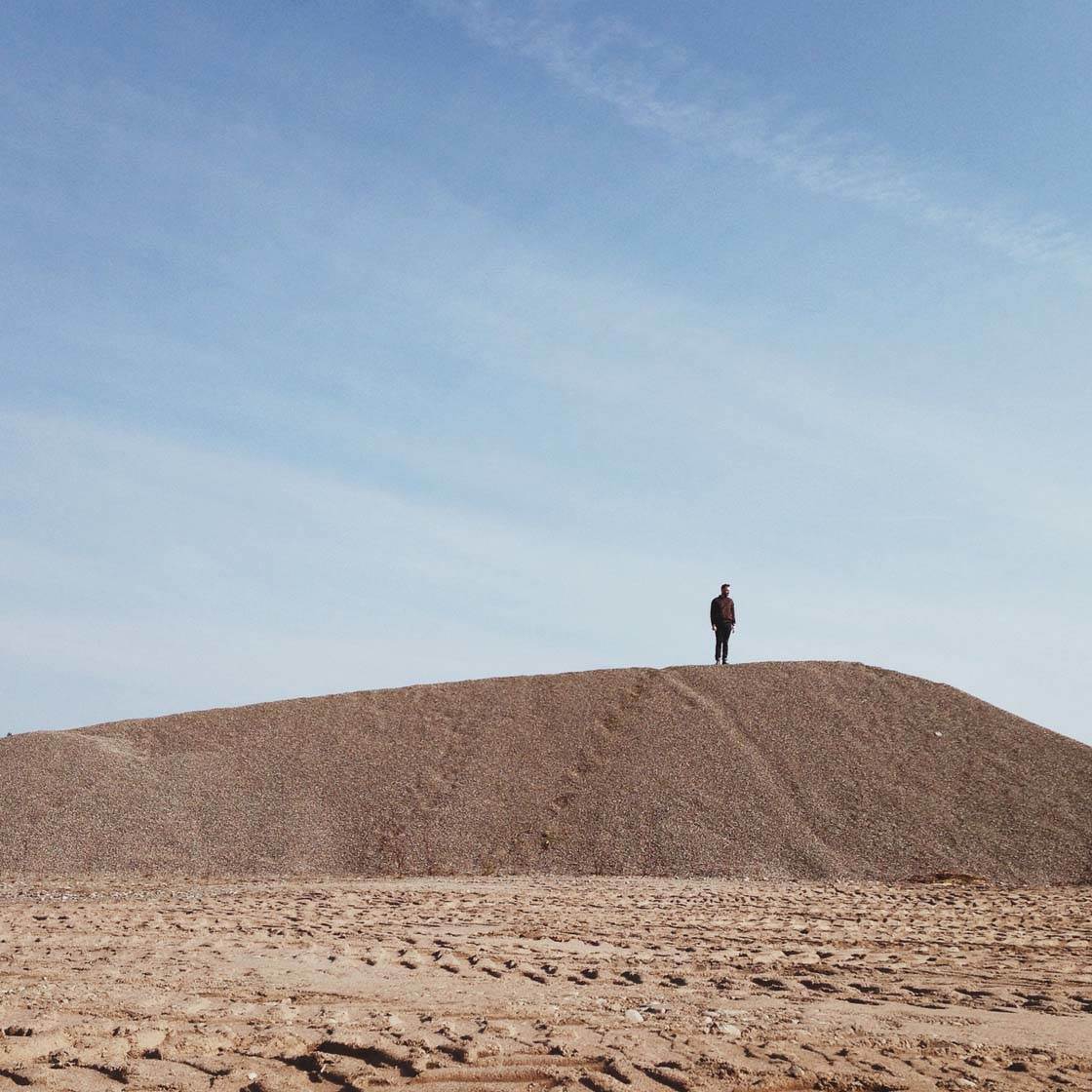
Changing your shooting angle can make a big difference to how your photo turns out. Shooting from a low angle allows you to get more plain sky behind your subject which is great for creating minimal compositions where your main subject really stands out.
4. Capture The Smaller Details
Rather than always shooting wide landscape photography, mix it up a bit by focusing on interesting features of the environment. When you’re out exploring, try to notice the smaller details found in nature and capture them with your iPhone.
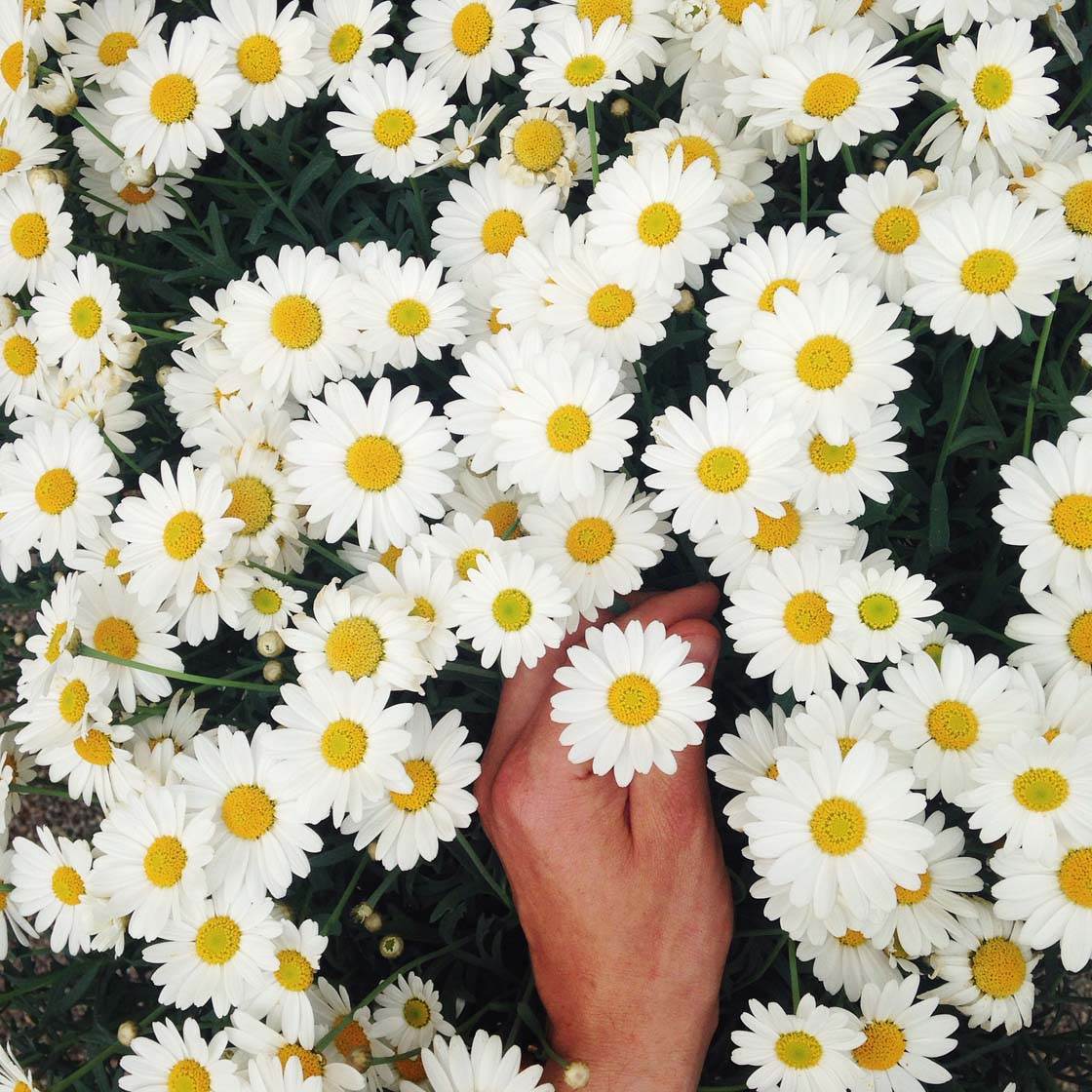
Look out for pretty flowers, colorful leaves and small insects. Keep your eyes peeled for textures, patterns and color combinations that will add visual appeal to your photo collection. Don’t be afraid to fill the entire frame with your subject.
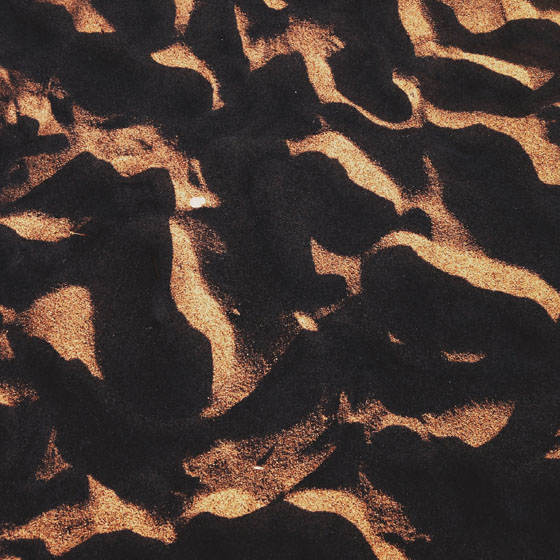
As you’re walking through a landscape don’t just look straight ahead into the distance. Explore every part of the location.
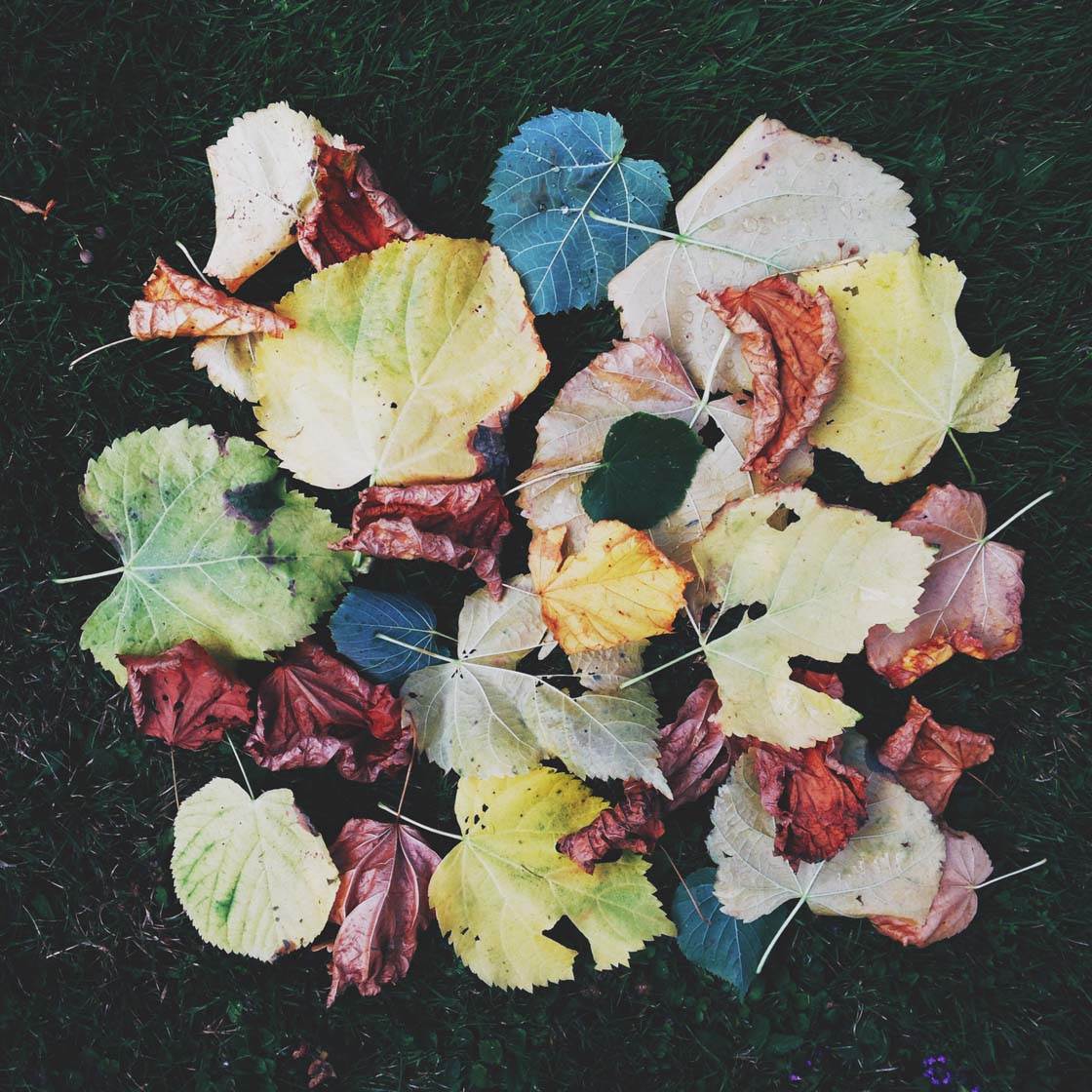
Look down at the ground to see what’s there, look up into a tree canopy as the light shines through, or get close to the water’s surface of a lake to capture the texture of the ripples.
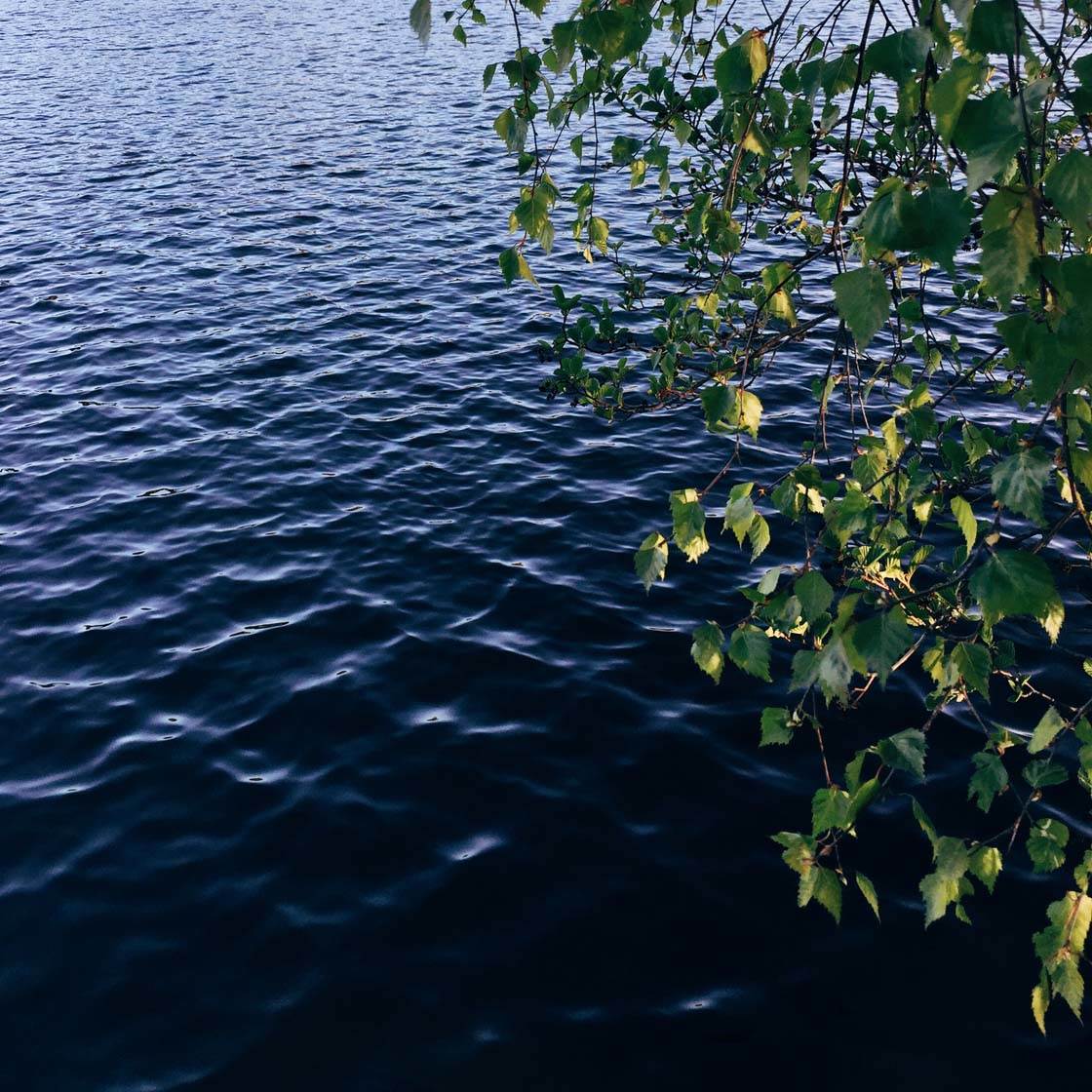
Including close-up pictures of nature along with your wide angle landscape shots helps to tell a more complete story and adds variety to your photo feed.
5. Shoot In Interesting Light & Weather
Light and weather conditions are crucial for good landscape photography. Bad weather is often better for shooting landscapes as it creates more interesting light and dramatic skies.
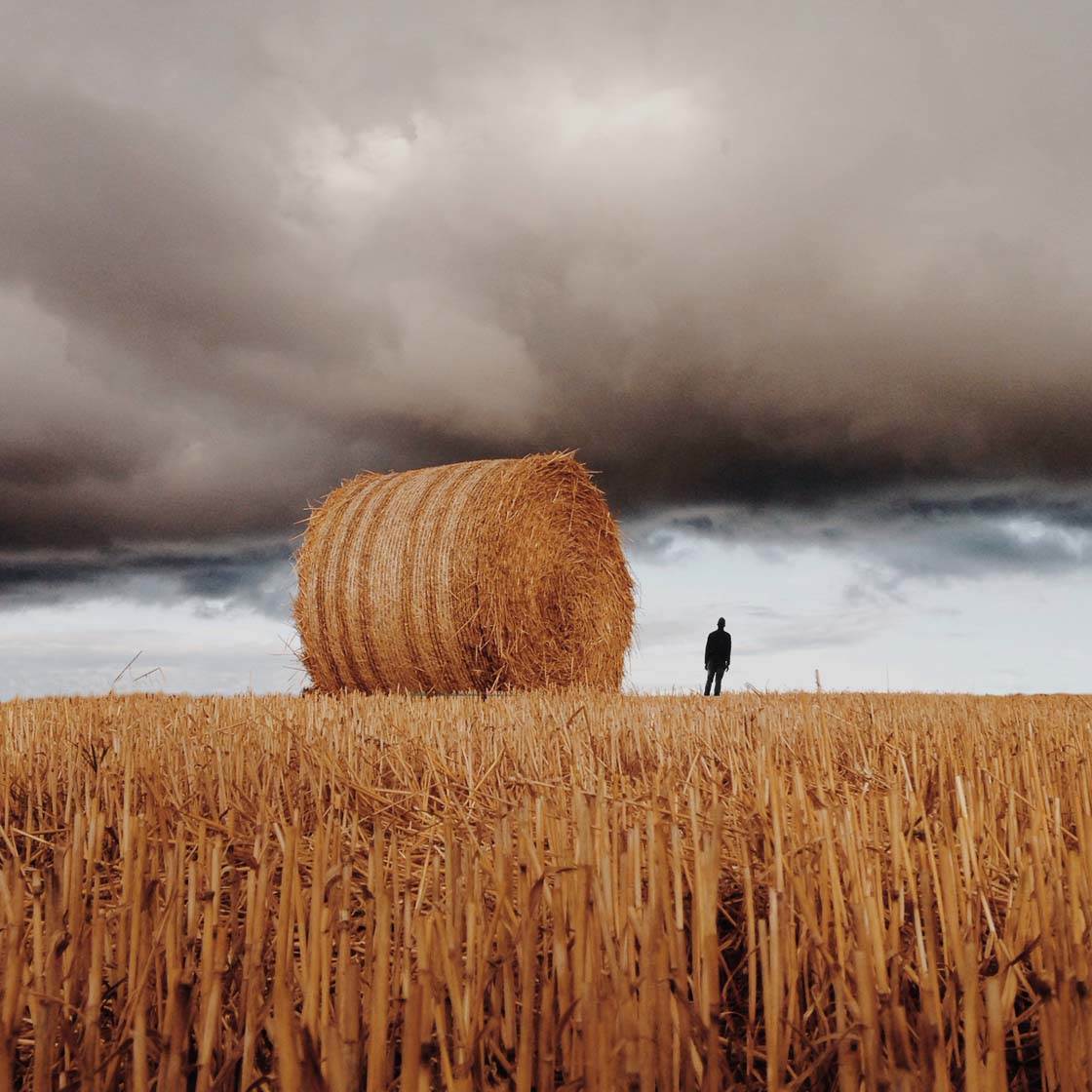
I love to shoot on a really cloudy day, so that the clouds create a big dreamy backdrop. Shooting in these conditions is more likely to make your photos stand out from the crowd.
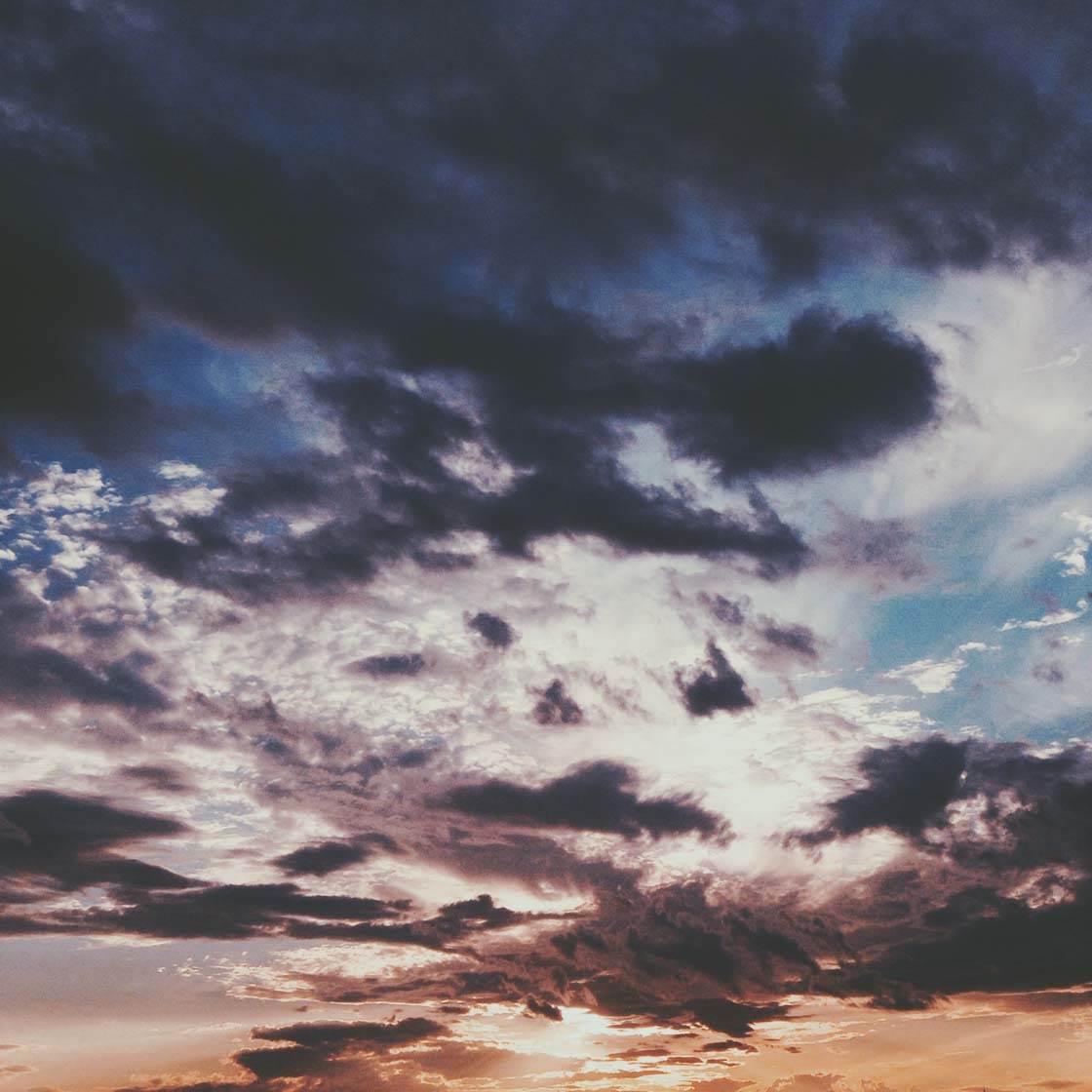
Big dark clouds add amazing drama to a scene, so if you like to create dramatic and moody photos, get out with your iPhone camera when the sky is “angry!”
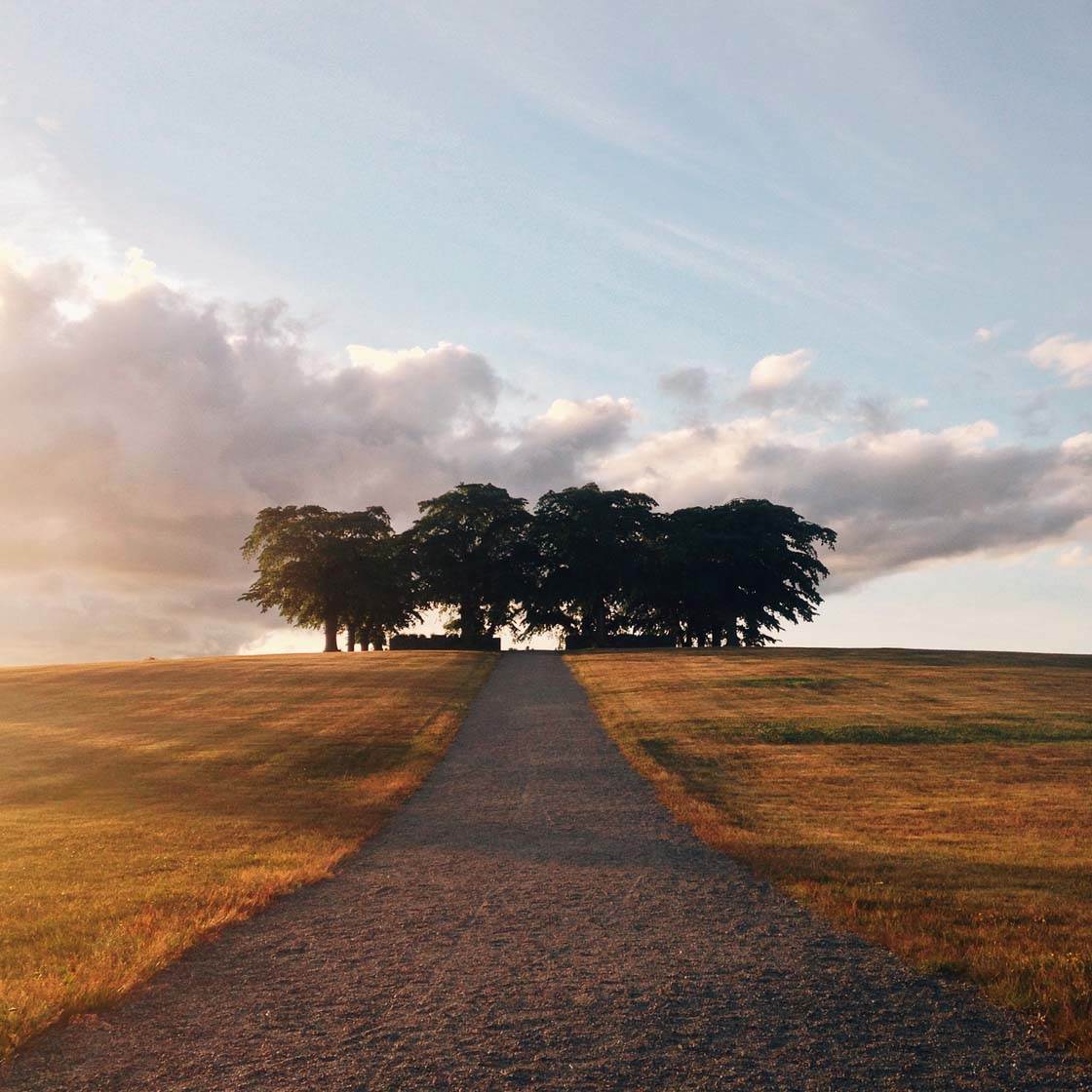
With regards to light, the most beautiful time of day to shoot is around the golden hours of sunrise and sunset. The colors will be warm and vibrant, and the low position of the sun creates wonderful long shadows that add visual interest to the foreground of your scene.
Shooting into the sun will turn your subjects into silhouettes, whereas shooting with the sun behind you will cast wonderful warm light onto the scene.
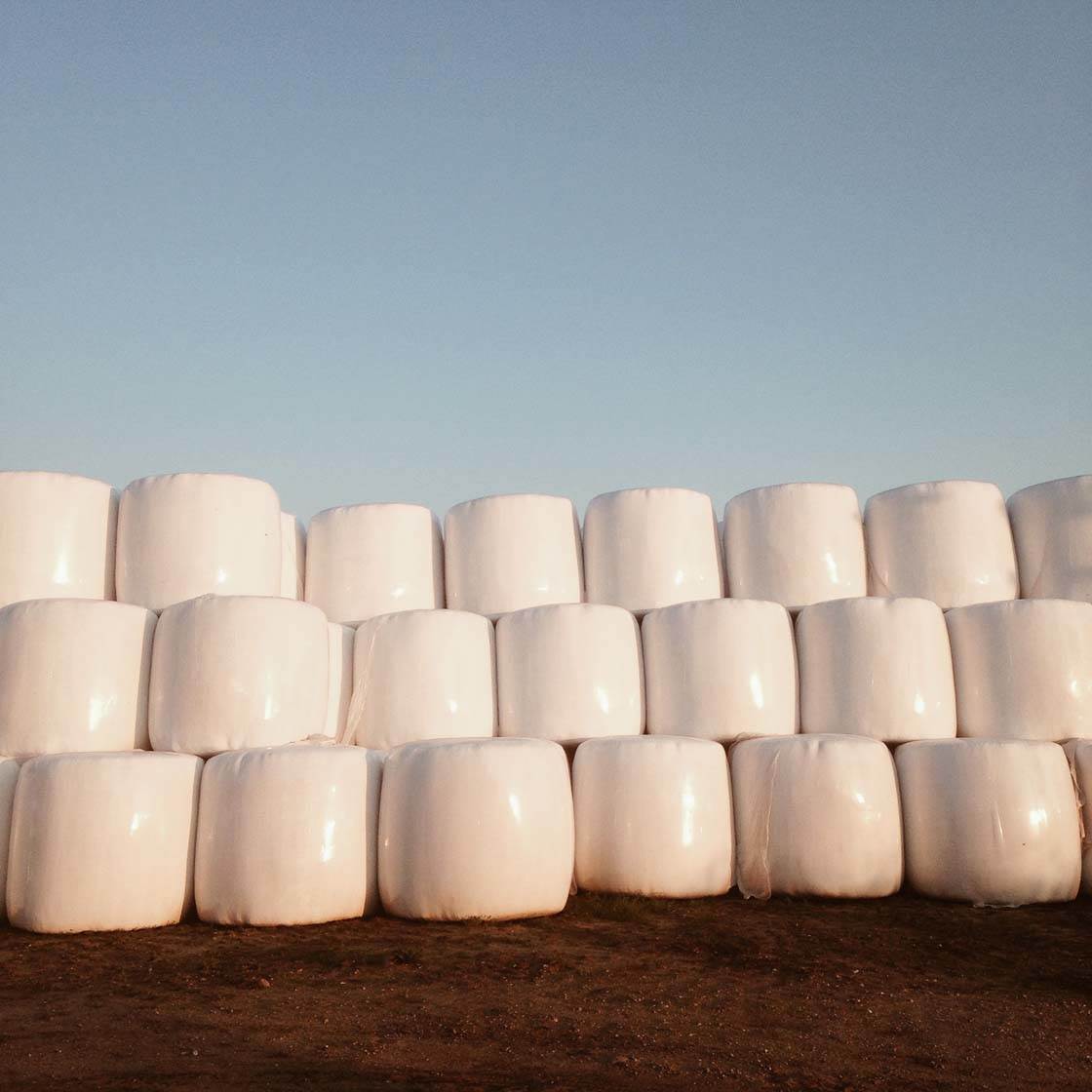
Shooting with the sun behind you makes the sun work like a huge flashlight, lighting up the whole area you’re shooting. Almost anything looks beautiful in really good light, including these plastic wrapped bales!
6. Include People In The Scene
One of my favorite ways to make a landscape photo more interesting is to include a person in the scene. The person will act as a strong focal point, especially in big empty landscapes.
With a person as your main point of interest, it becomes easier to build your composition around them. Just place the person where you want them in the scene, then experiment with your shooting angle and framing until the composition looks good.
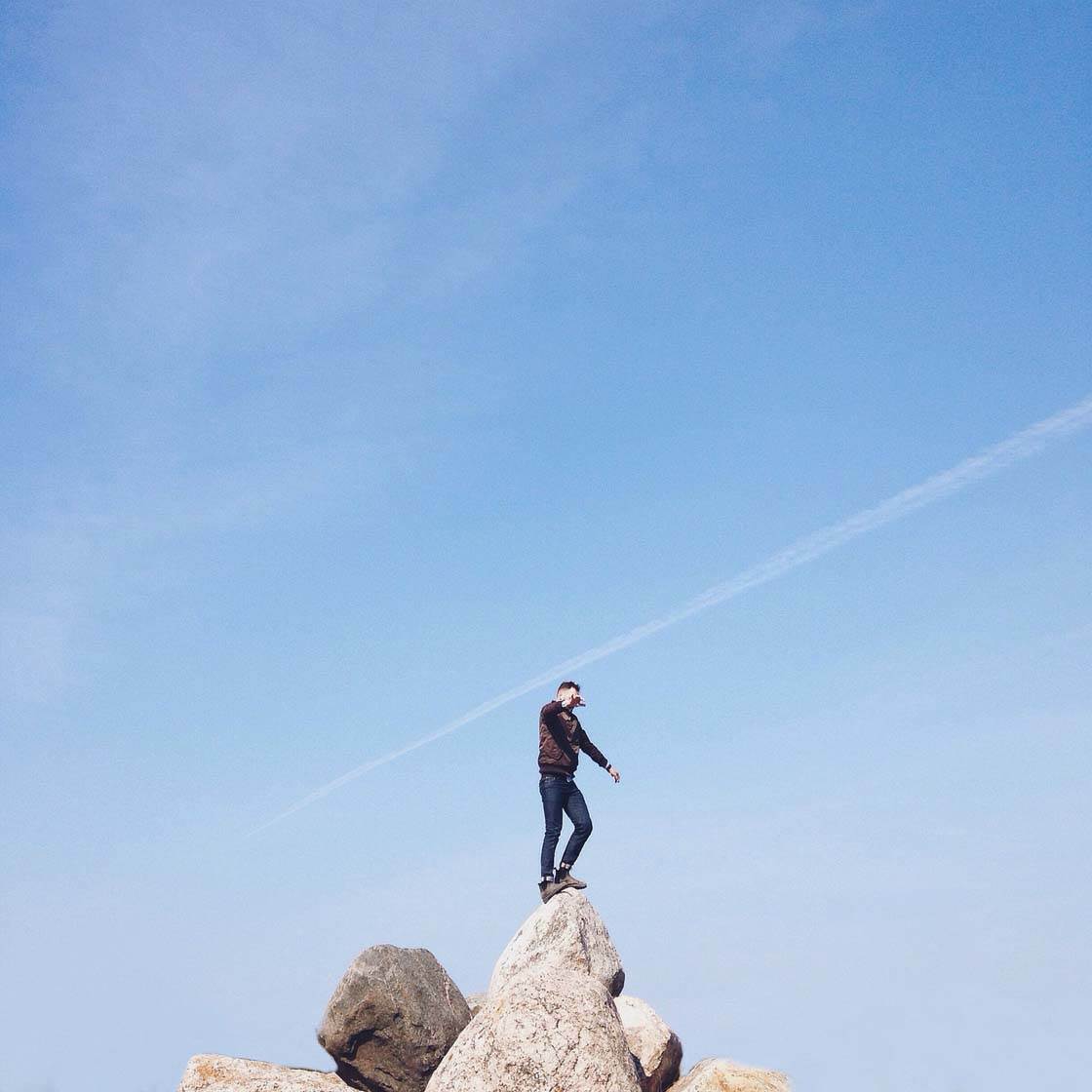
Ask a friend to join you to act as your subject, or find a group of people that want to shoot the same things as you. Alternatively, use a small iPhone tripod such as the Joby GorillaPod so that you can appear in the photo yourself.
When using yourself as the subject you can either set a self-timer so that you have time to run into the shot, or invest in a remote shutter release such as the Muku Shuttr so that you can trigger the shutter button when you’re ready.
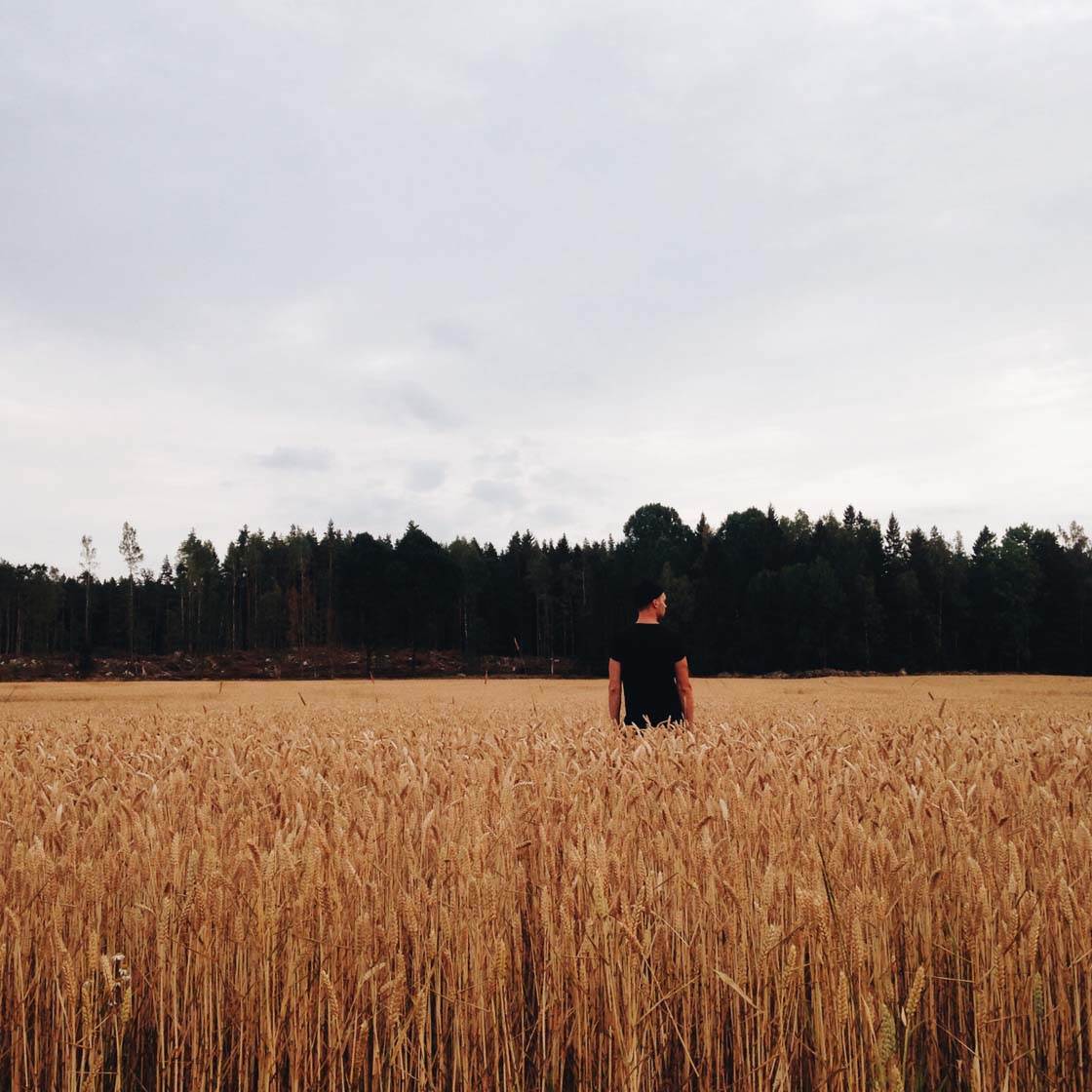
Whether your background is a simple field of grass or a more scenic view, including a human presence creates an extra dimension that inanimate objects can’t generate.
Depending on how you pose the person and frame the shot, adding people to your landscape photos can create a wonderful sense of mystery and intrigue.
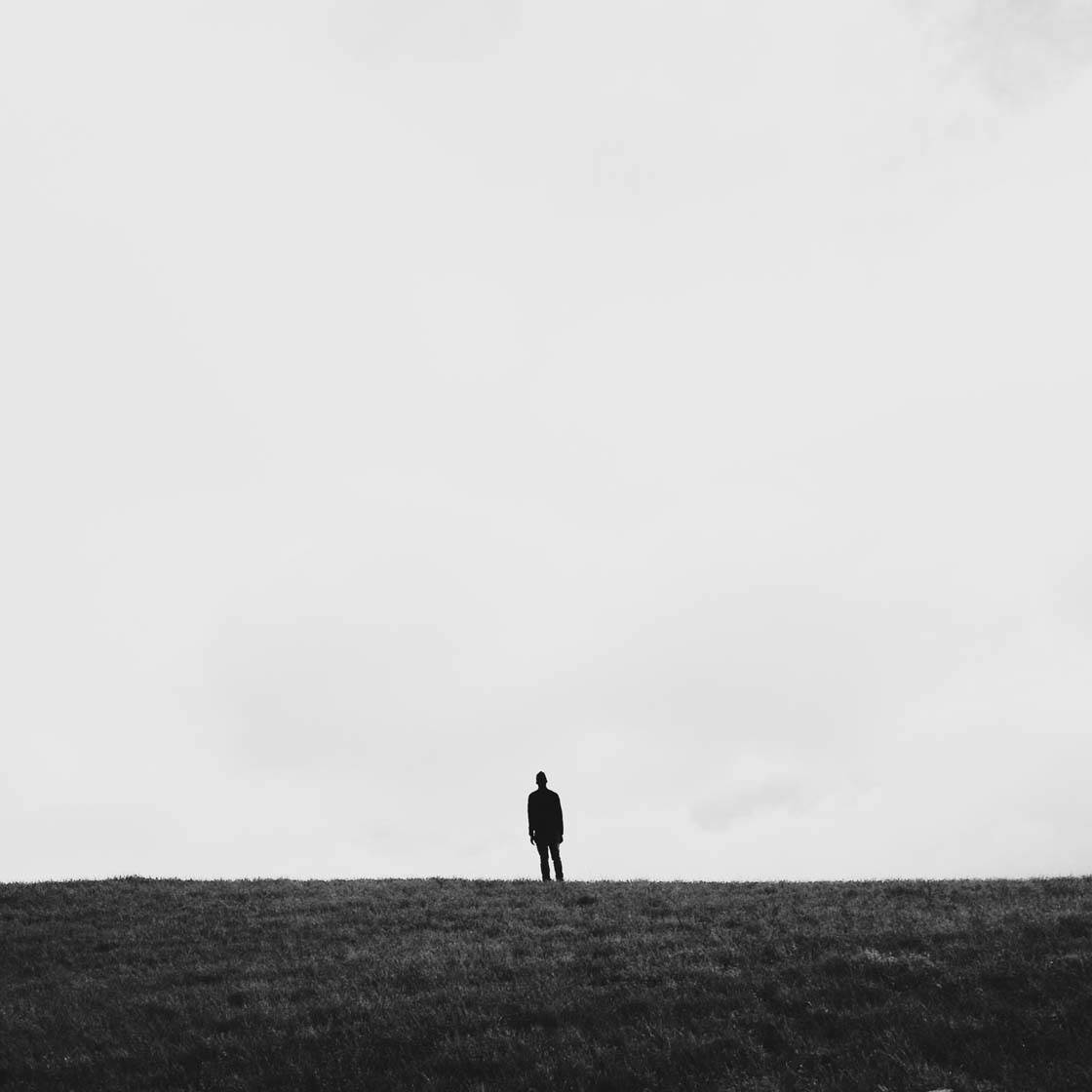
Photographing the person from behind so you can’t see their face is a perfect way to achieve this. Creating silhouettes is another method that you could use.
Creativity can often be sparked when you meet up and shoot with other likeminded people. Experiment with different ways to include the person within the landscape. Have fun and see if you can make your photo a bit different by adding a unique or humorous element to the shot.
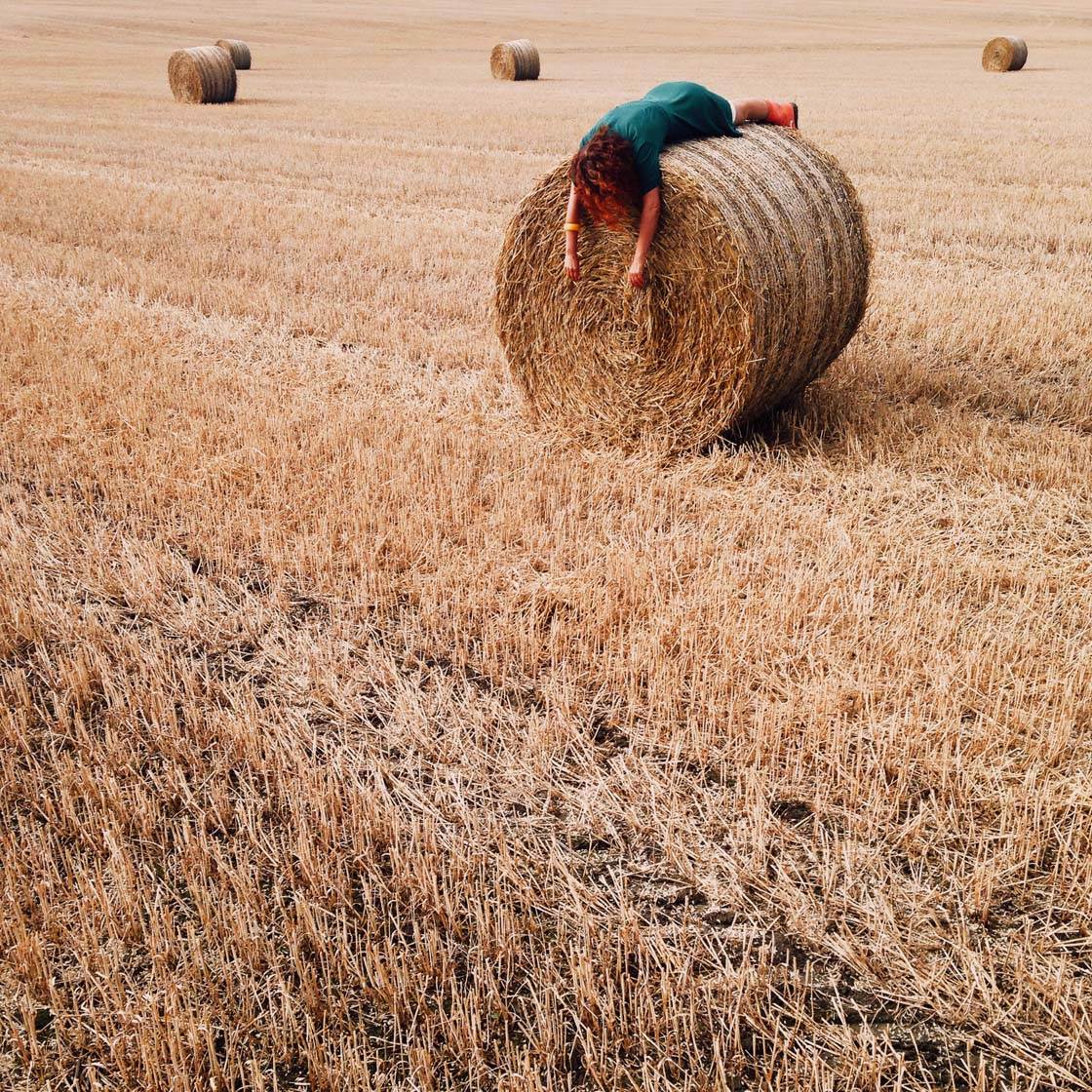
Try to think about what your subject should wear so they stand out well against the background. Dark clothes often work best as they contrast well against most colors that you find out in nature.
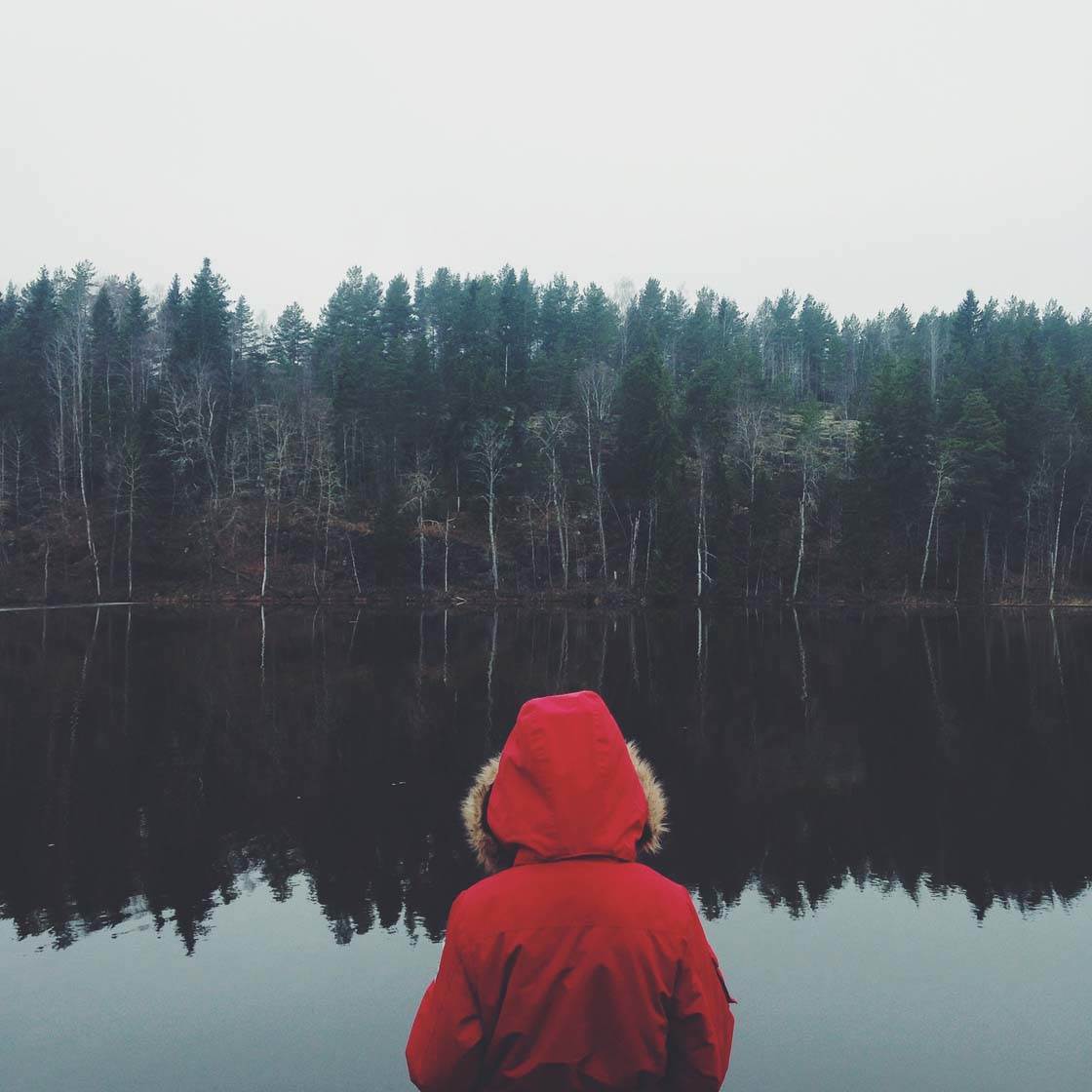
If the landscape is plain or dull, try using bright and vibrant clothing for an extra pop of color. Red works really well in most situations.
7. Use Props To Create Interest
Adding a simple prop to a landscape can add so much to the image. It has the same purpose as including a person, in that it creates a strong focal point, but a prop gives you more creative options.
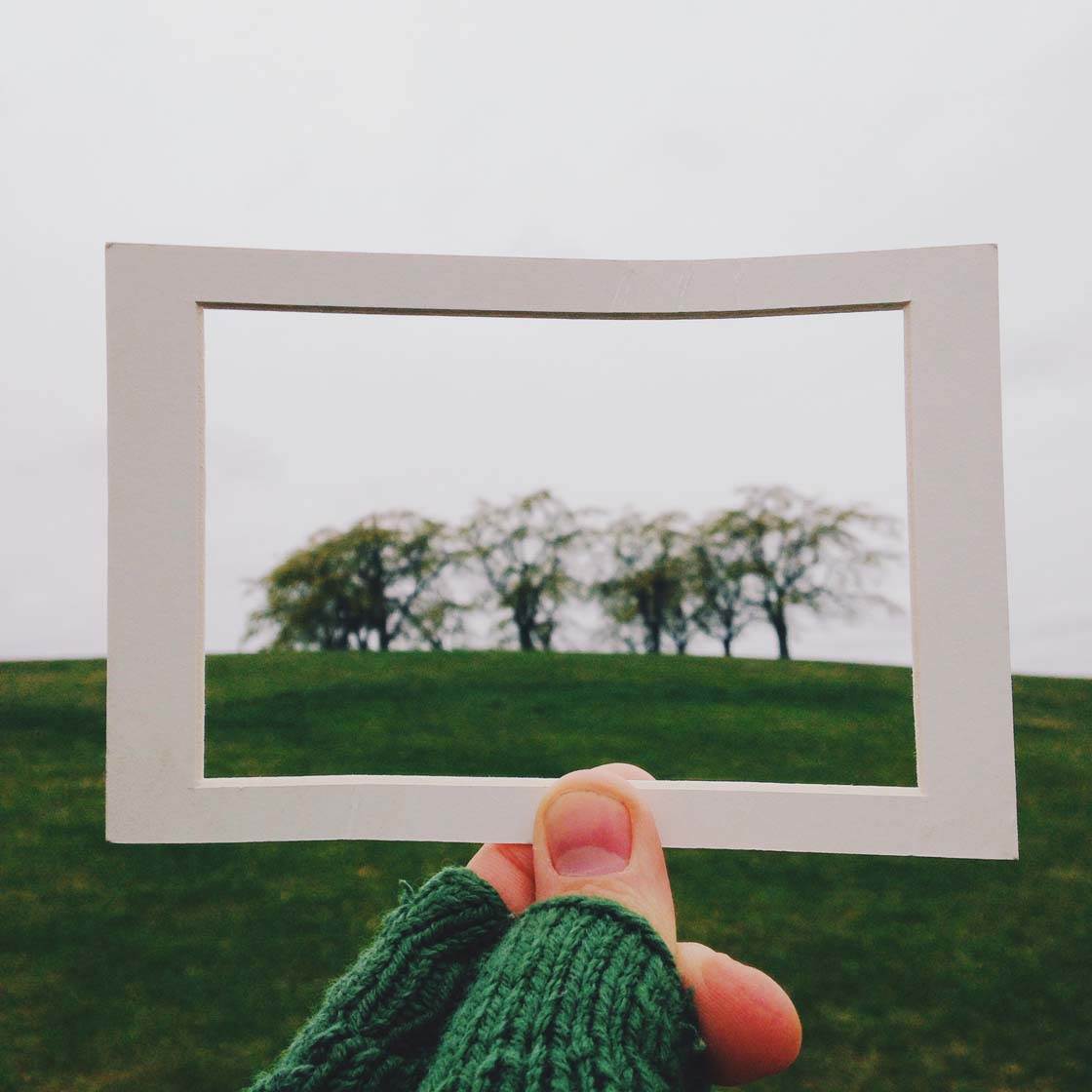
You can choose just about any object to spice up your picture. Items such as umbrellas, chairs, flowers and frames are my favorite props to work with.
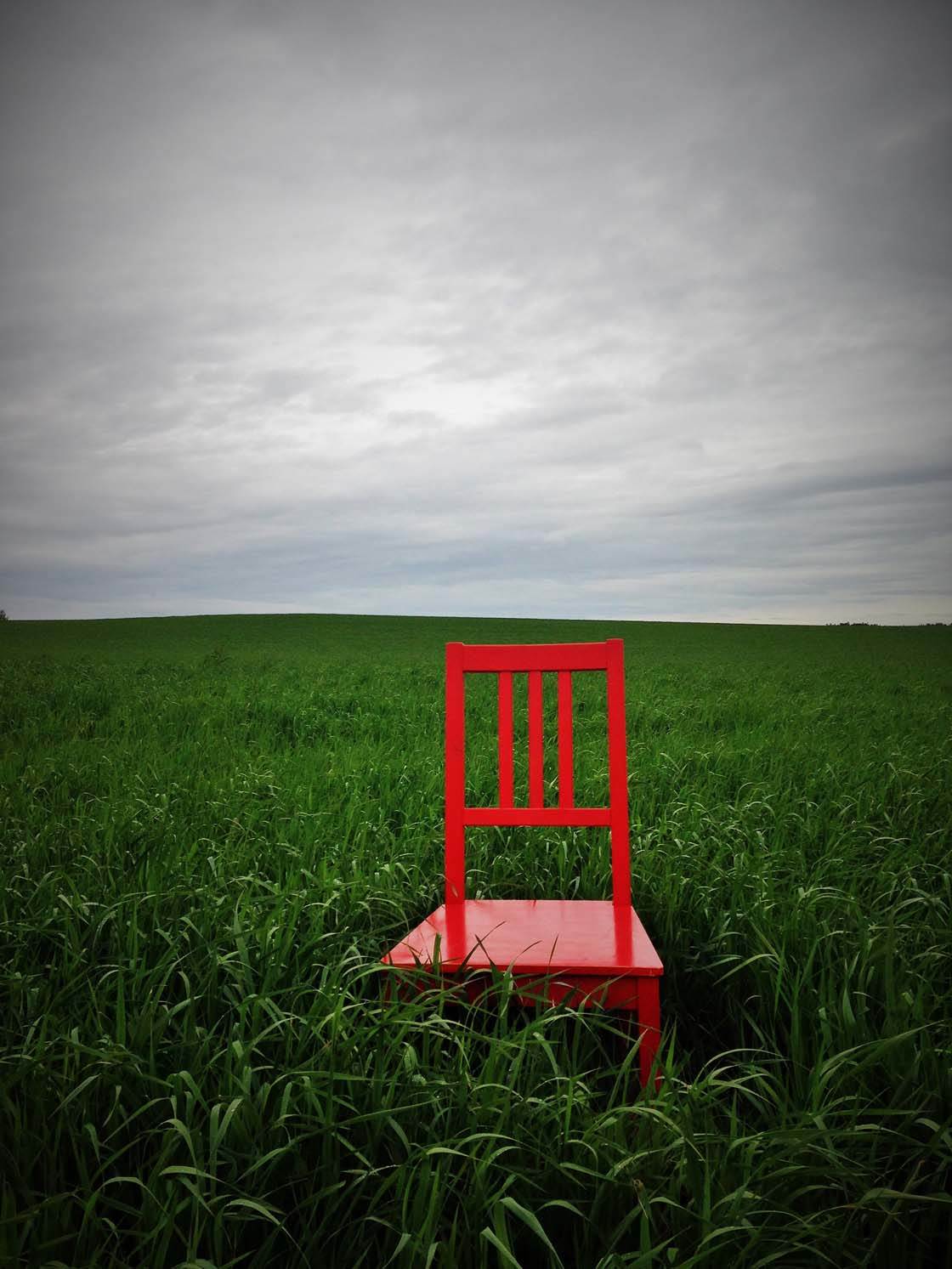
Look around your home and find any colored object that won’t be too difficult to carry around with you. And yes, I do carry that red chair with me on landscape shoots!
Don’t be afraid of what people might think. Armed with your props you’re going to be the one getting the best shots.
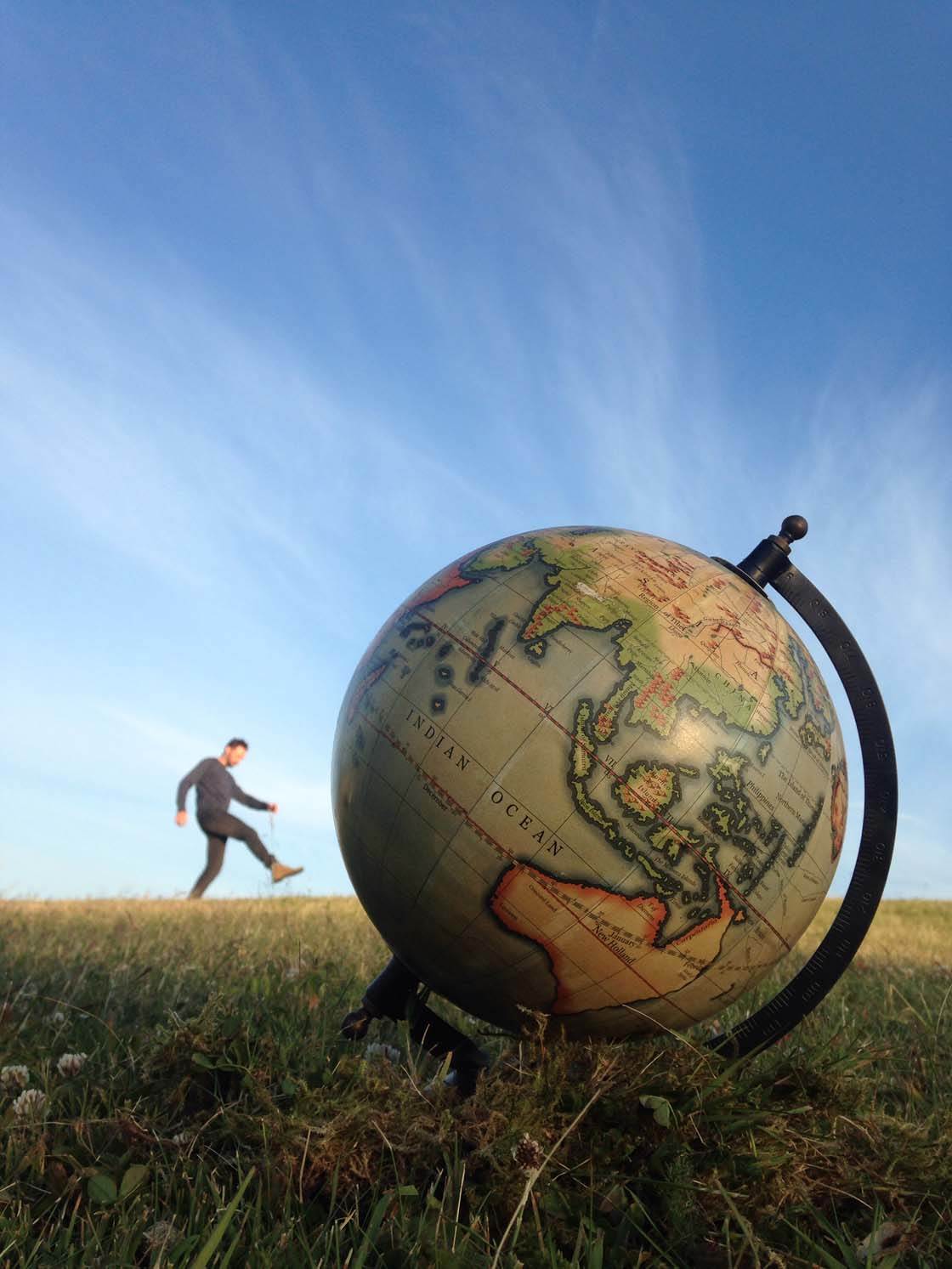
Be imaginative in how you use your props within the scene. Here I used a globe in the foreground, while I positioned myself much further away. Playing around with scale is a great way to create more intriguing shots.
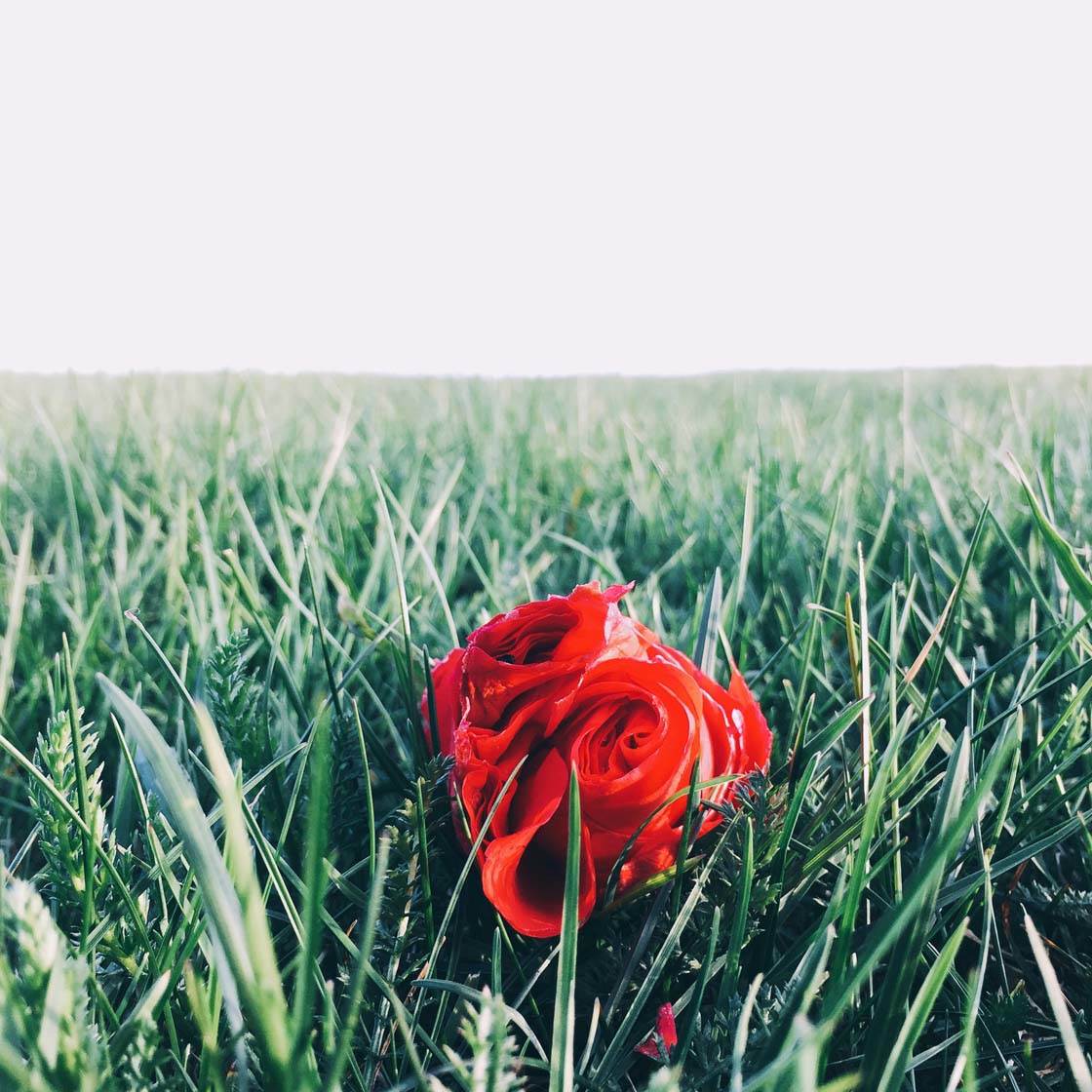
I like to have my props colorful for extra visibility and visual appeal. One of my favorite color combinations is red and green.
You can use props that aren’t colorful, but you should make sure they contrast against the background. For example, a black umbrella against a black wall won’t do the trick, but black on green will work!
8. Photograph Man-Made Objects
It’s not always convenient to include a person in your photo or to take an interesting prop out with you. However, you’ll often stumble upon man-made objects out in the landscape which can add a nice contrast to the natural surroundings.

Interesting buildings are great for including in your landscape photos. Whether the building is old or new, it’ll surely add an extra dimension and focal point to an otherwise empty landscape.
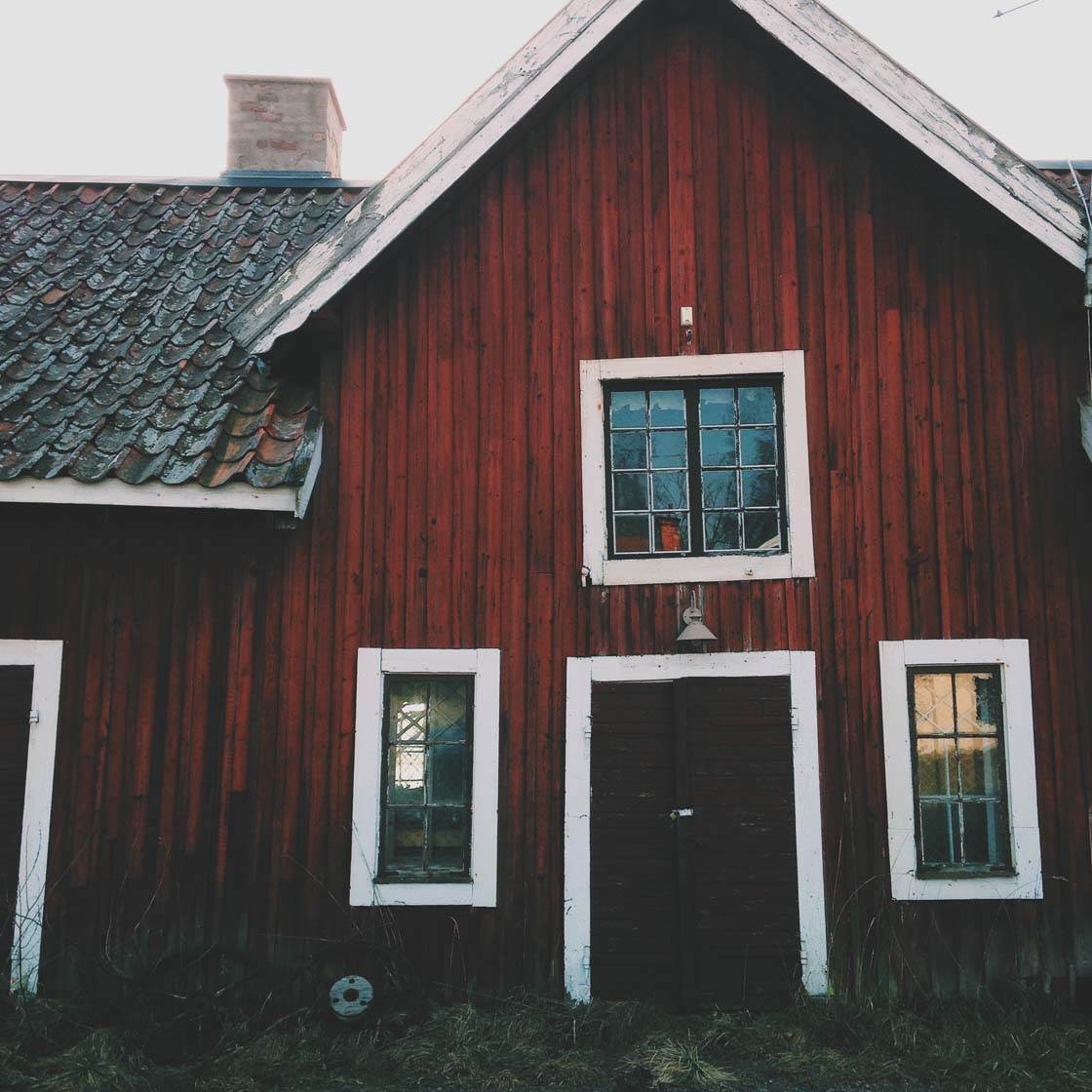
Old abandoned buildings are worth capturing up close too. Wooden objects often add a beautiful texture and history to your photography. The muted colors of wood are great for when you want to add a vintage feel to your photos.
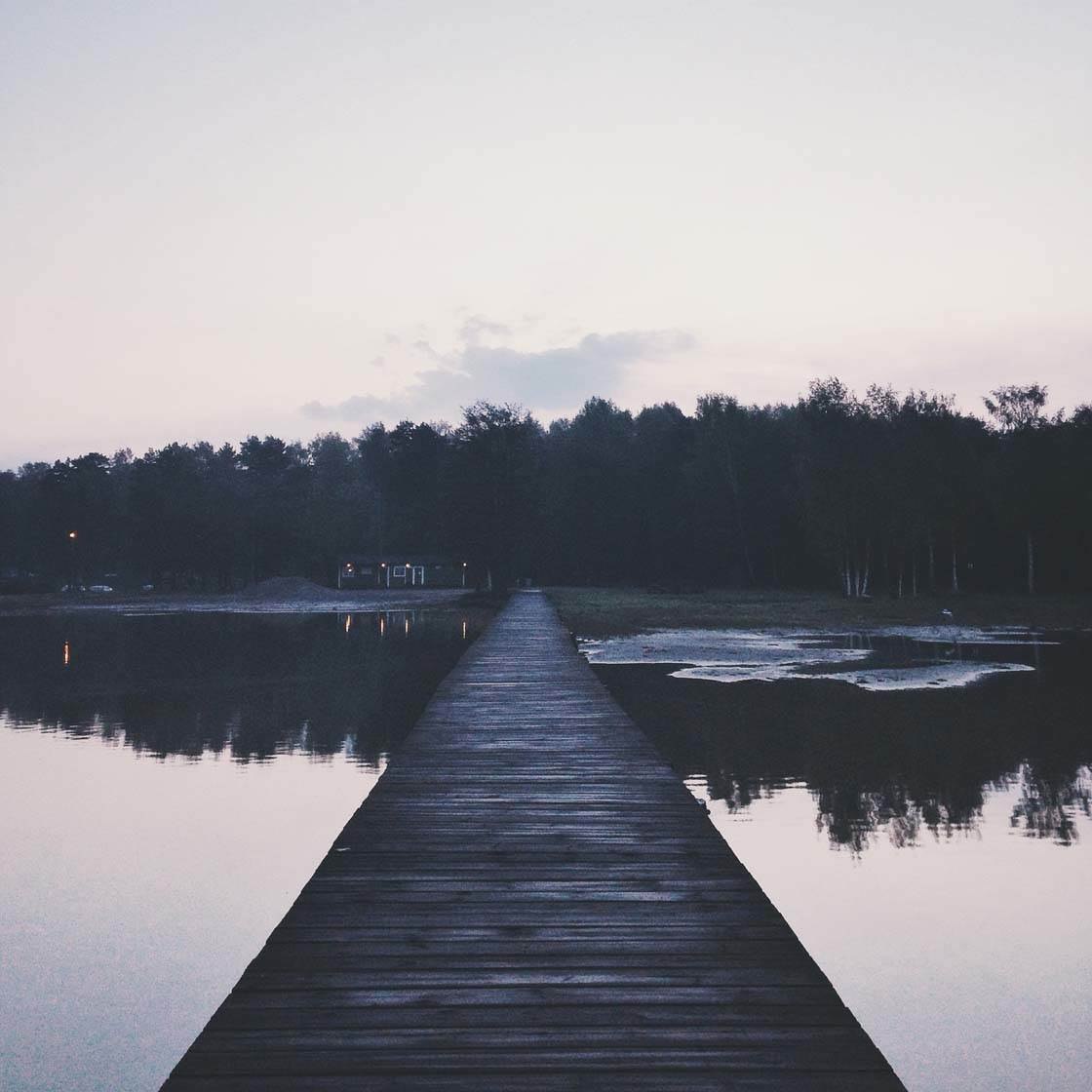
If you’re shooting around water, look out for a beaten up wooden jetty that will be the perfect match against nature’s colors.
Boats also make great subjects to include in your landscapes. I love their strong shape and form, and their wonderful wooden textures.
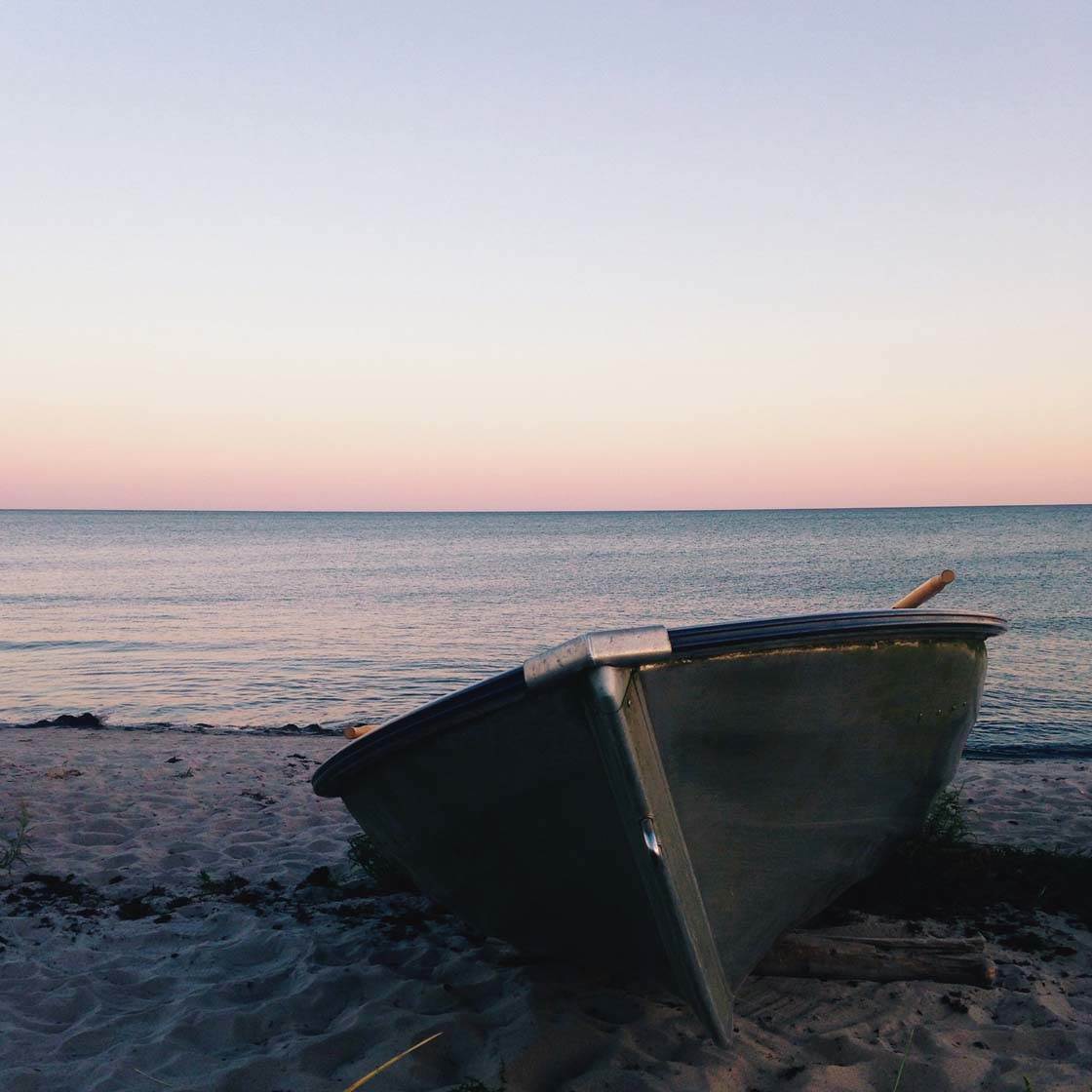
Other man-made objects to look out for are railways, power lines, roads, bridges, gates, old benches, or any objects that people leave behind. Anything man-made can be a really great addition to your composition and will add soul to your landscape photography.
9. Shoot In Different Seasons
The change of seasons offers new photo opportunities every few months, even if you’ve already shot the place in question before. Make sure you get out into the landscape during each season to capture the variations in vegetation, weather and light.
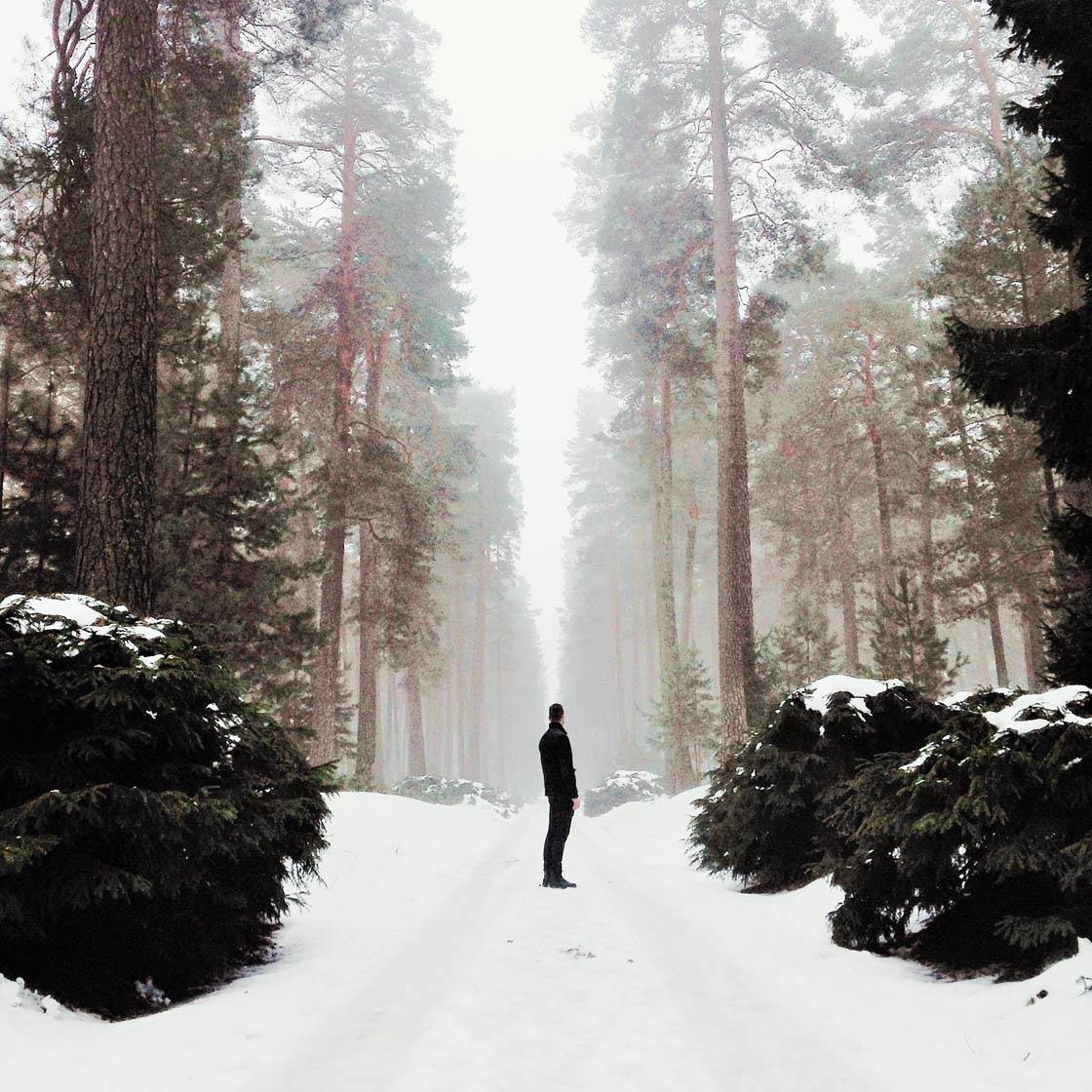
Just imagine a cold and barren winter landscape compared to a colorful and lush summer scene. Both have their own charm, and both can be the most beautiful thing you’ve ever laid your eyes on.
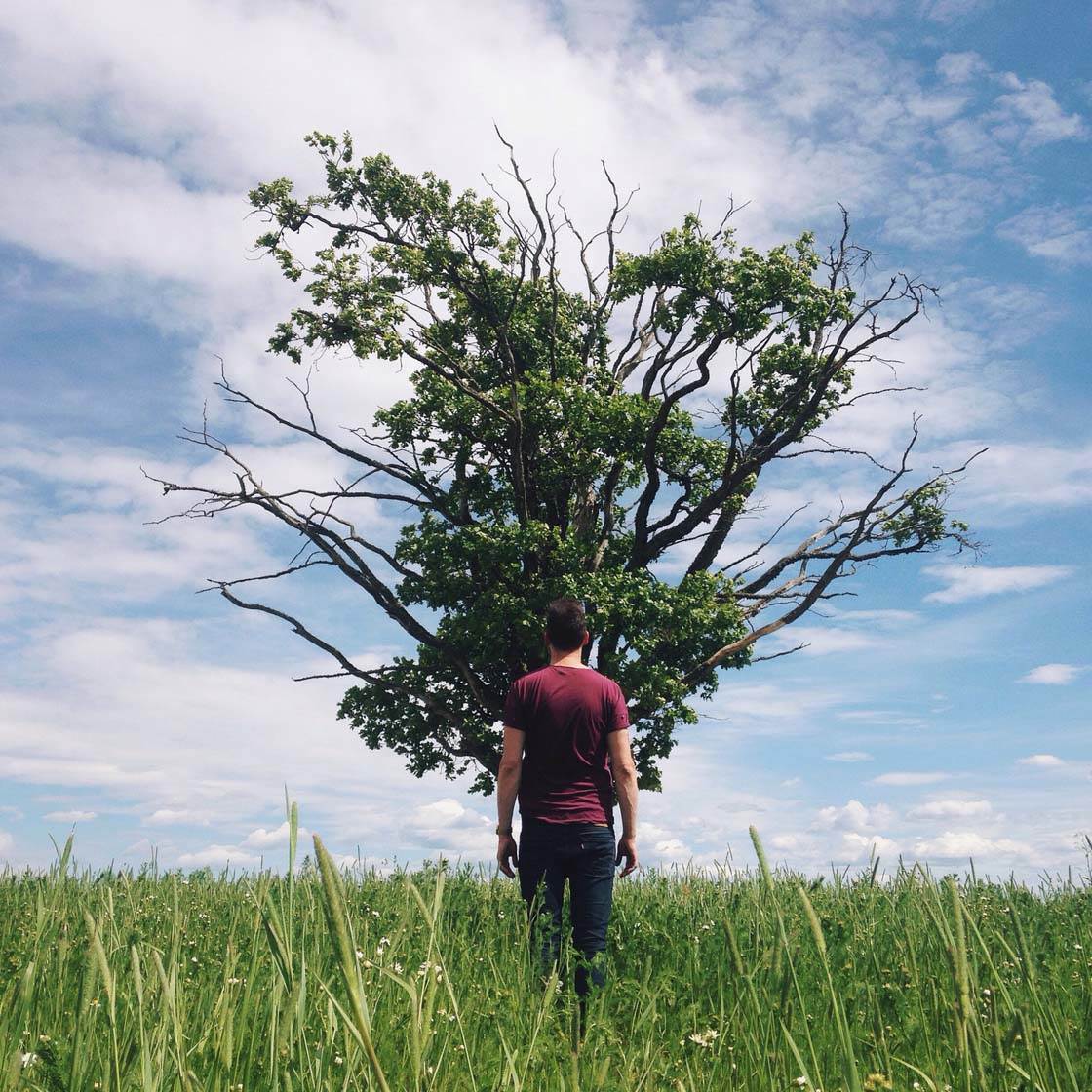
I love to return to the same place every new season to see how it’s changed. Even though I’m shooting in the same spot I can take a completely different photo each time.
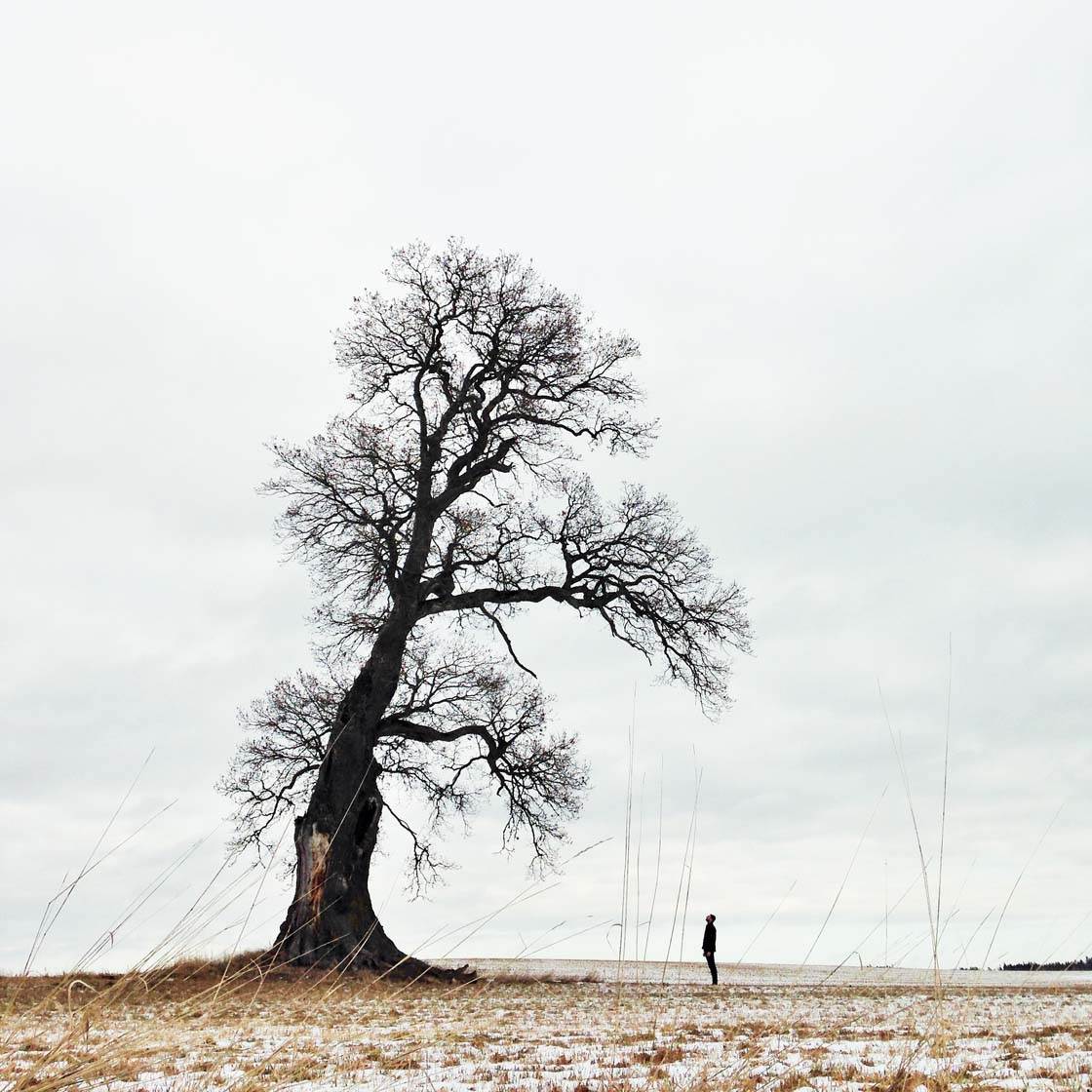
The photos above and below are of my favorite tree that I like to visit throughout the year. I took both photos from the same viewpoint, but they have a completely different look and feel due to the time of year that I shot them.
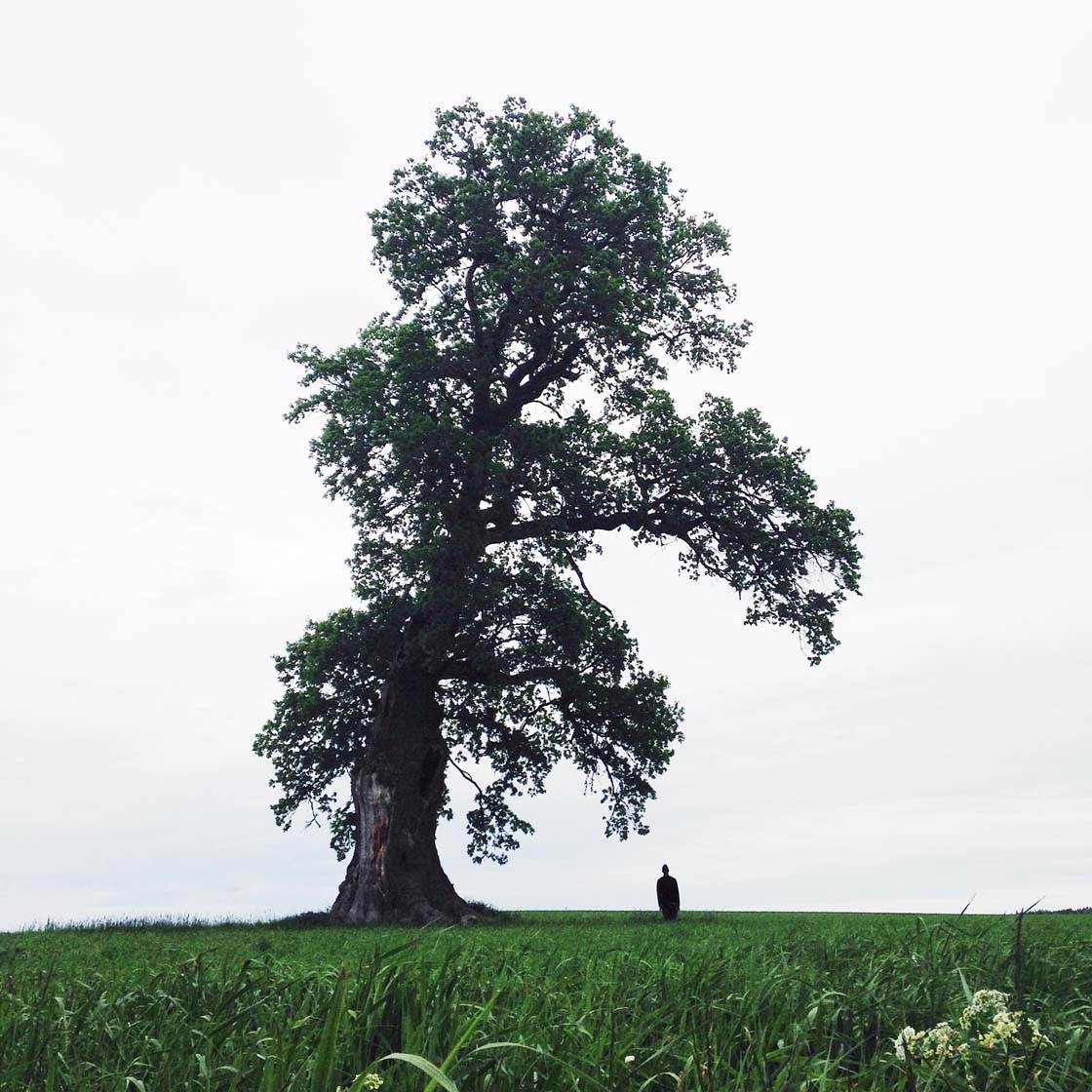
Spring is a wonderful time to get out into the landscape and shoot. When the first flowers pop out of the ground and the trees start to blossom, the landscape will be filled with delicate beauty.

And don’t forget to shoot during fall. The colors at this time of year will be stunning as the leaves begin to turn all different shades of orange and red.
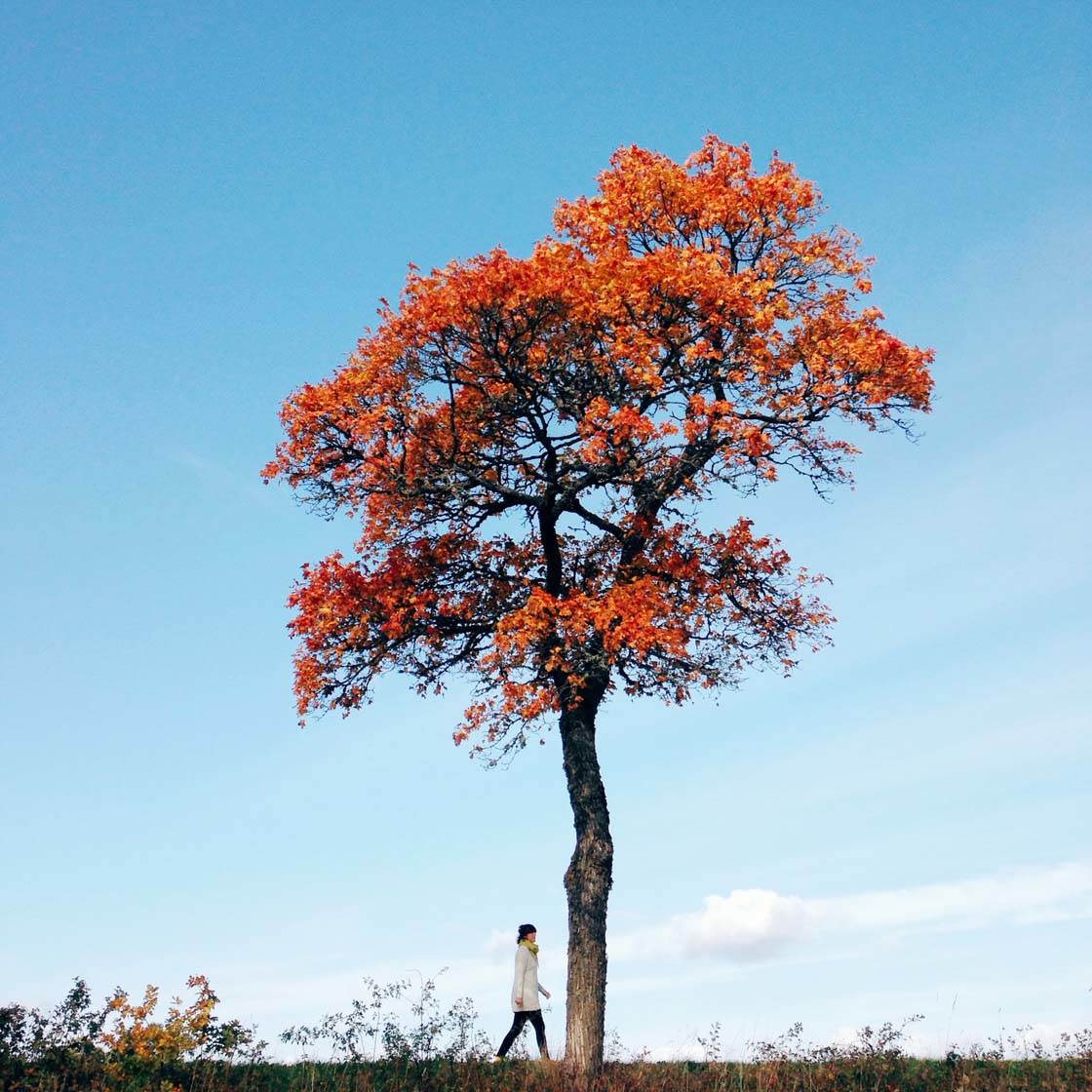
10. Create A Sense Of Depth
Finally, taking everything into account that you’ve learned so far, it’s important to always do what you can to create a sense of depth in your landscape photos. Without this your images will look “flat” and won’t convey the scale and distance that you saw with your own eyes.
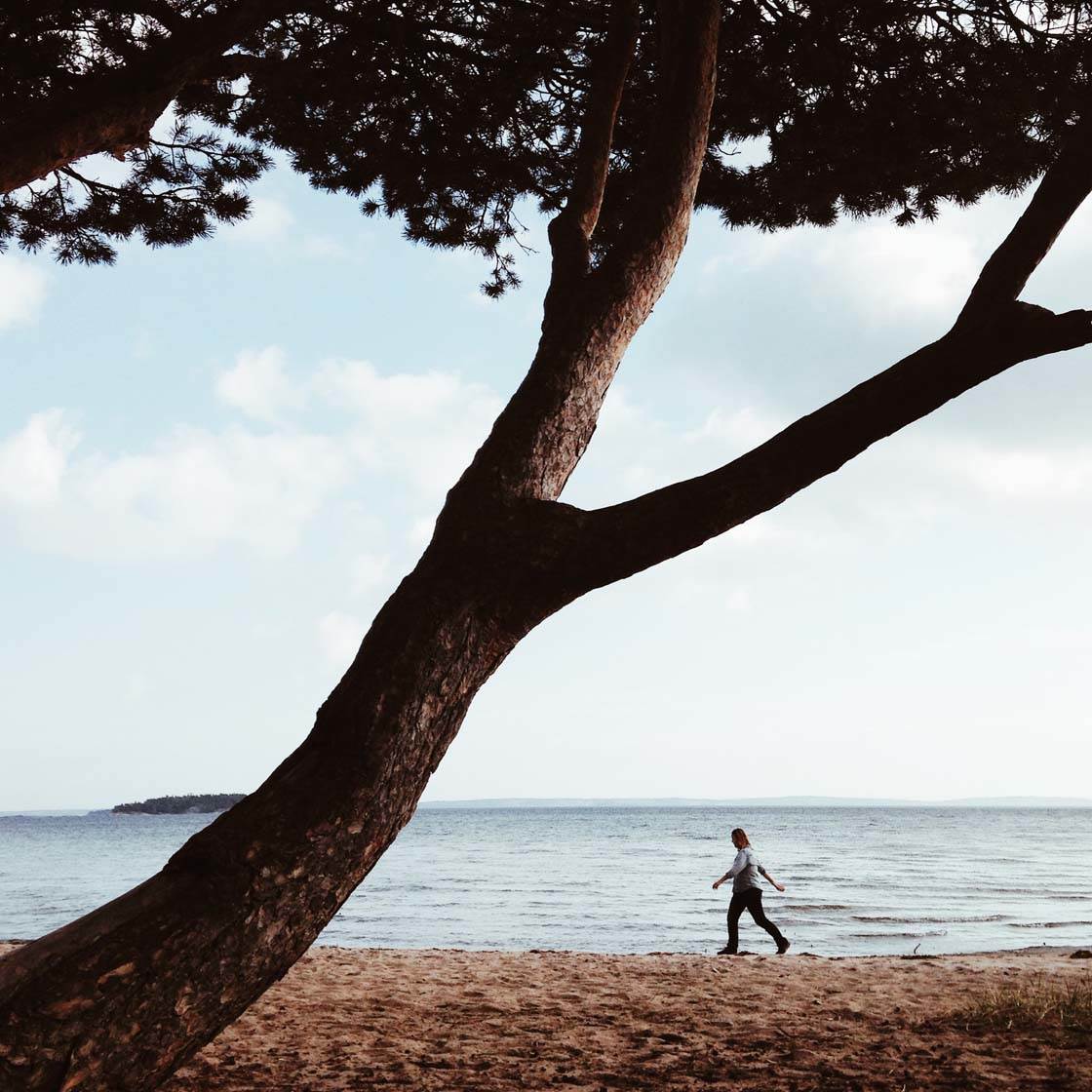
Luckily there are some simple techniques that you can use to show depth in your landscape photos. Composing your shot with elements at different distances from the camera is the key to creating a sense of depth.
The aim is to have objects in the foreground as well as in the distance. You could use rocks, plants, flowers, people, a tree trunk, or just about anything else that’s on the ground to add foreground interest to your landscapes scene.
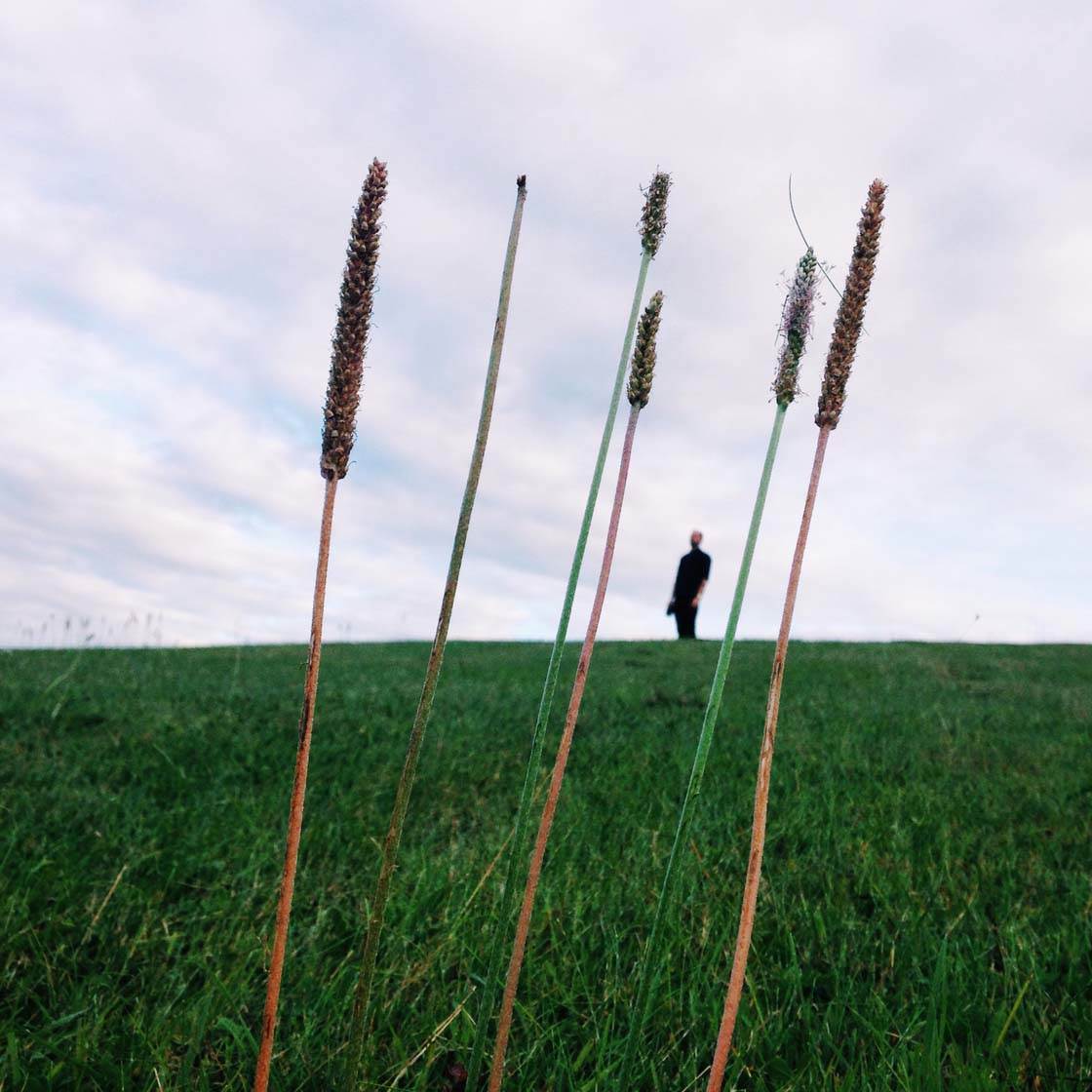
Your eyes will naturally move from the objects in the foreground to those in the distance and back again. This tells your brain that there’s distance between each element, and therefore depth. Shoot from a low angle if you’re struggling to get the foreground objects into your frame.
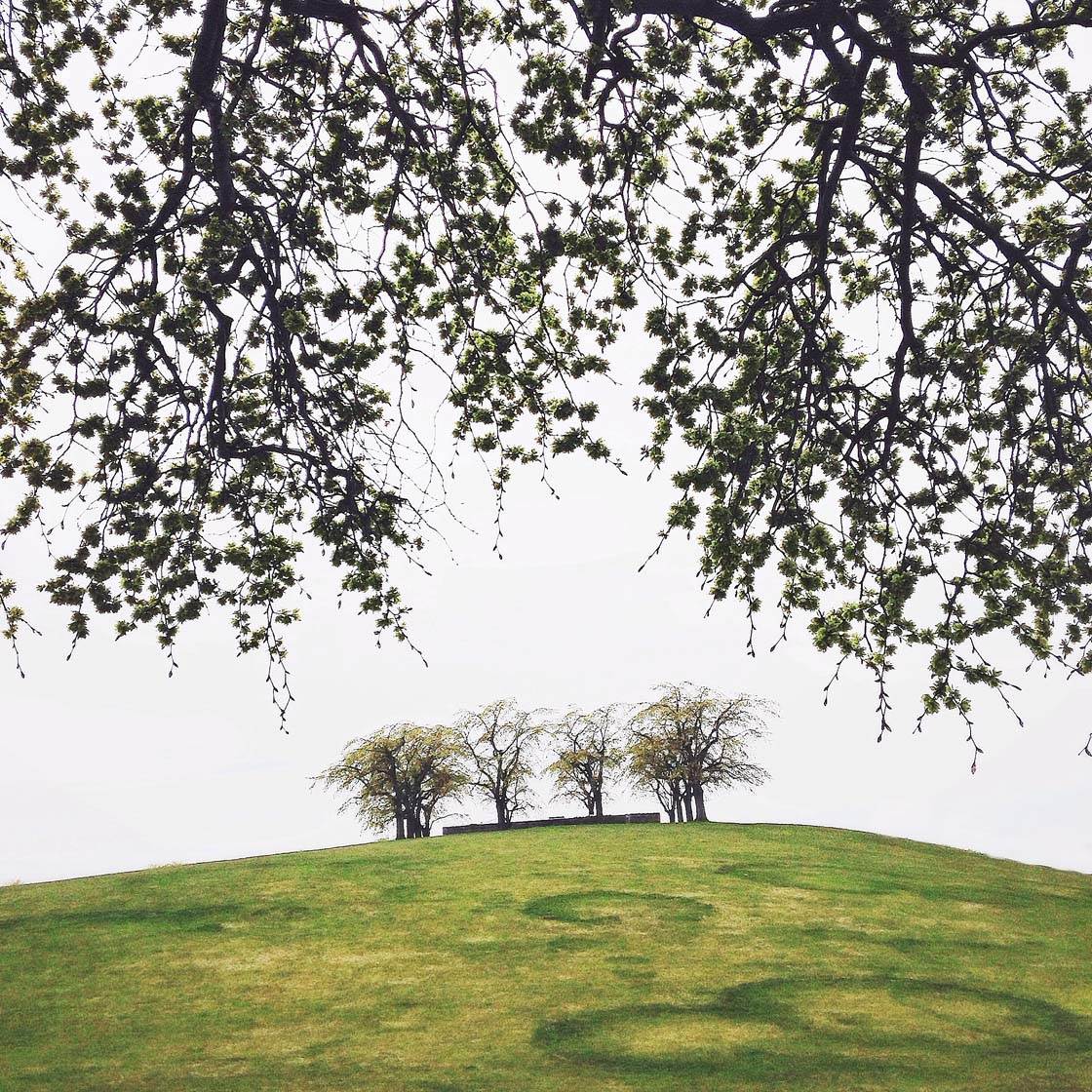
If there’s nothing on the ground to act as foreground interest, maybe there are some overhanging tree branches that you could stand under and include along the top of your shot. Just make sure they don’t cover your main subject in the distance.
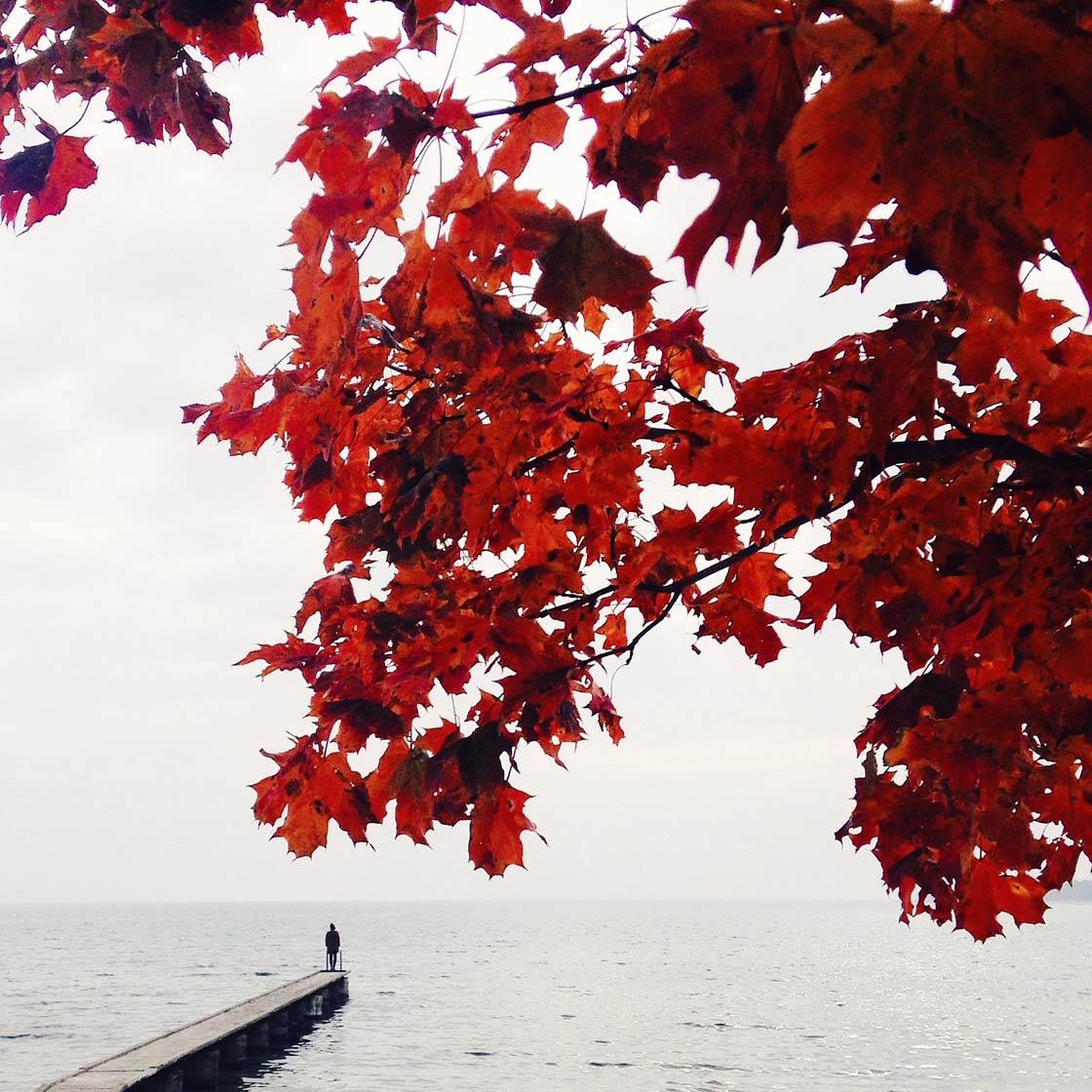
Another popular technique for creating depth is to use leading lines in your composition. Leading lines are simply lines that lead from one part of the scene to another.
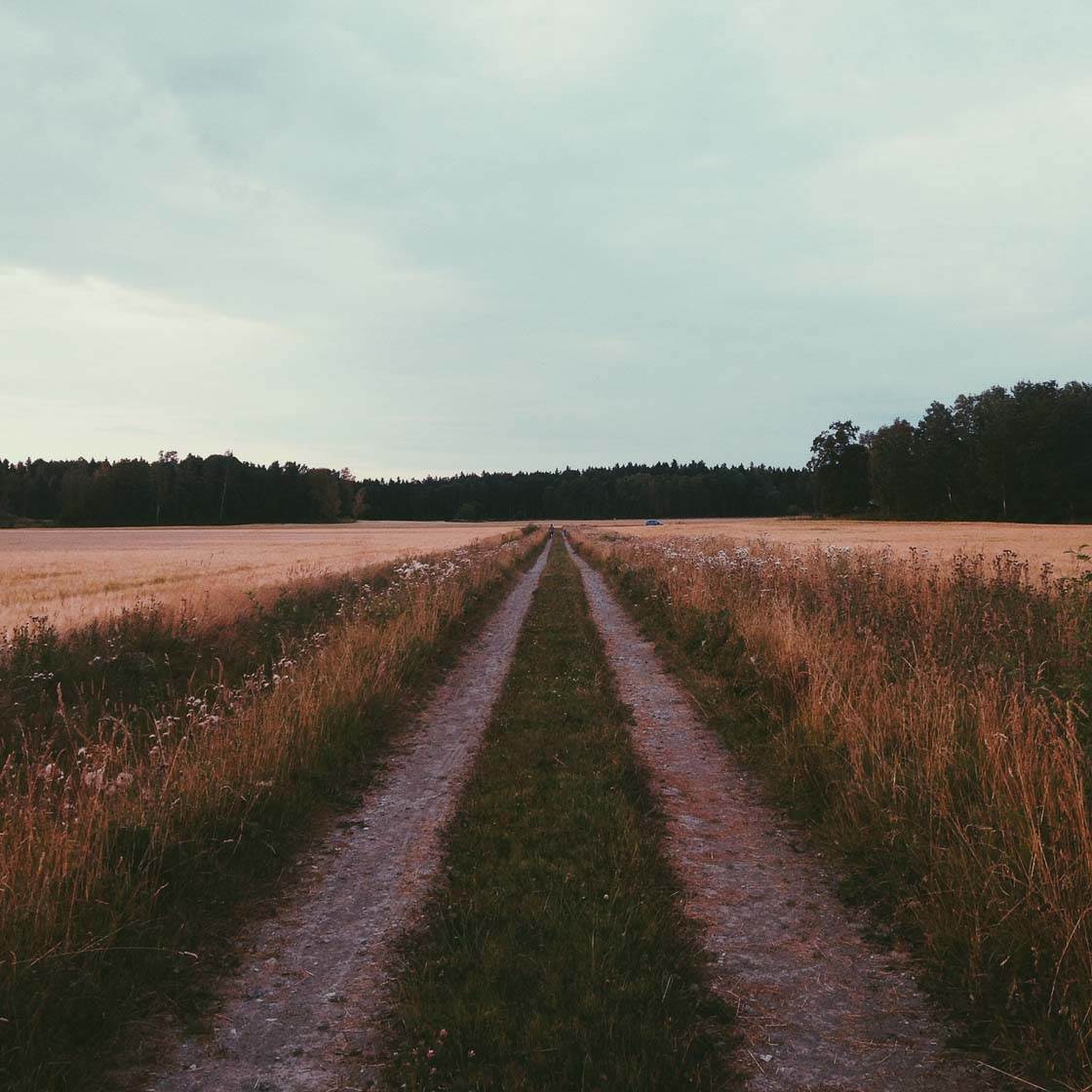
By starting the line in the foreground the viewer’s eye will naturally follow the line, taking them deeper into the photo. This is also a means of including foreground interest.
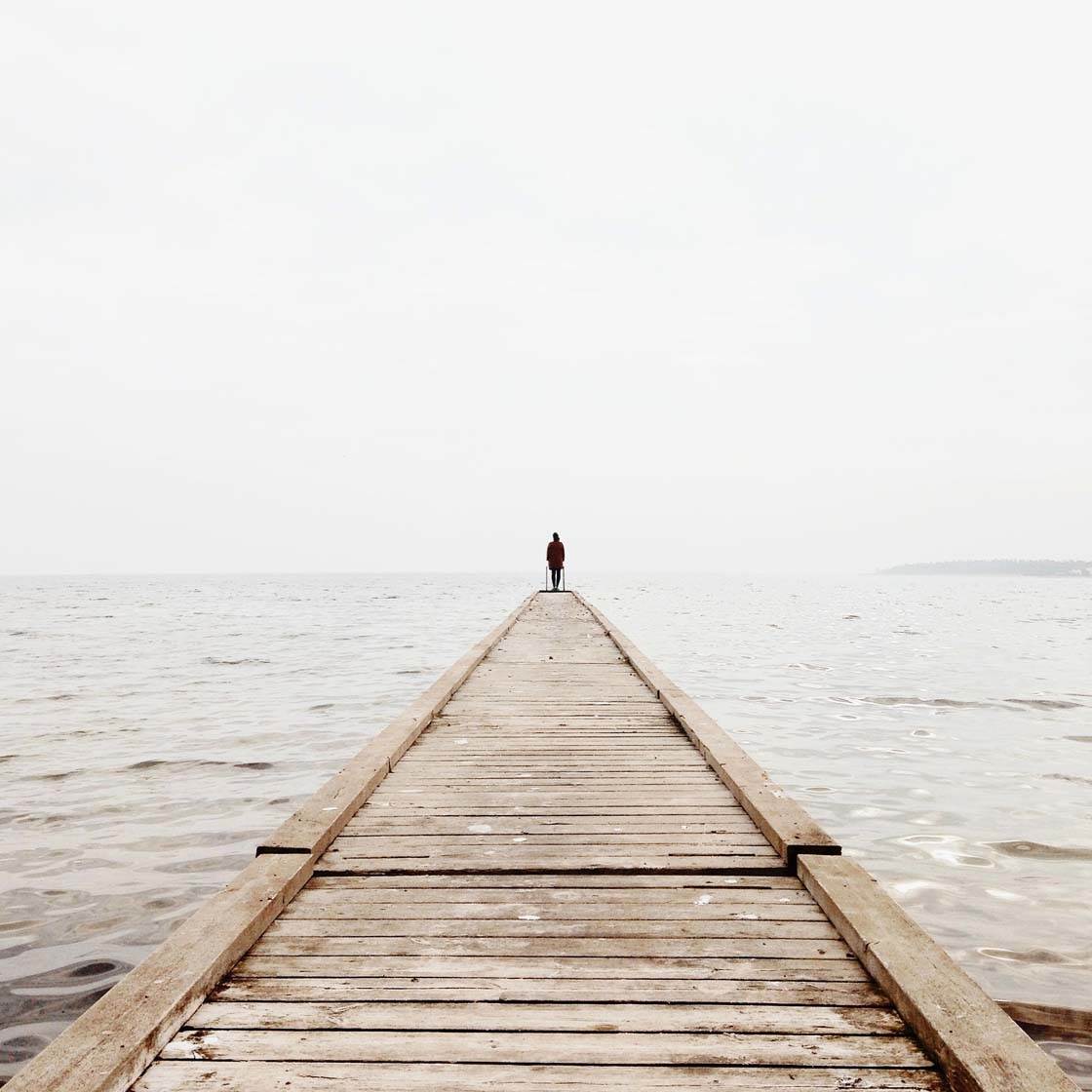
If you can position your main subject at the end of the leading line or somewhere along it, this is even better. The line will lead the eye directly to the intended point of interest, creating an extremely powerful composition.
An added benefit of using parallel leading lines such as a jetty, road, bridge, railway track, or even parallel rows of trees, is that you can create wonderful symmetrical compositions as long as you position the lines perfectly central.
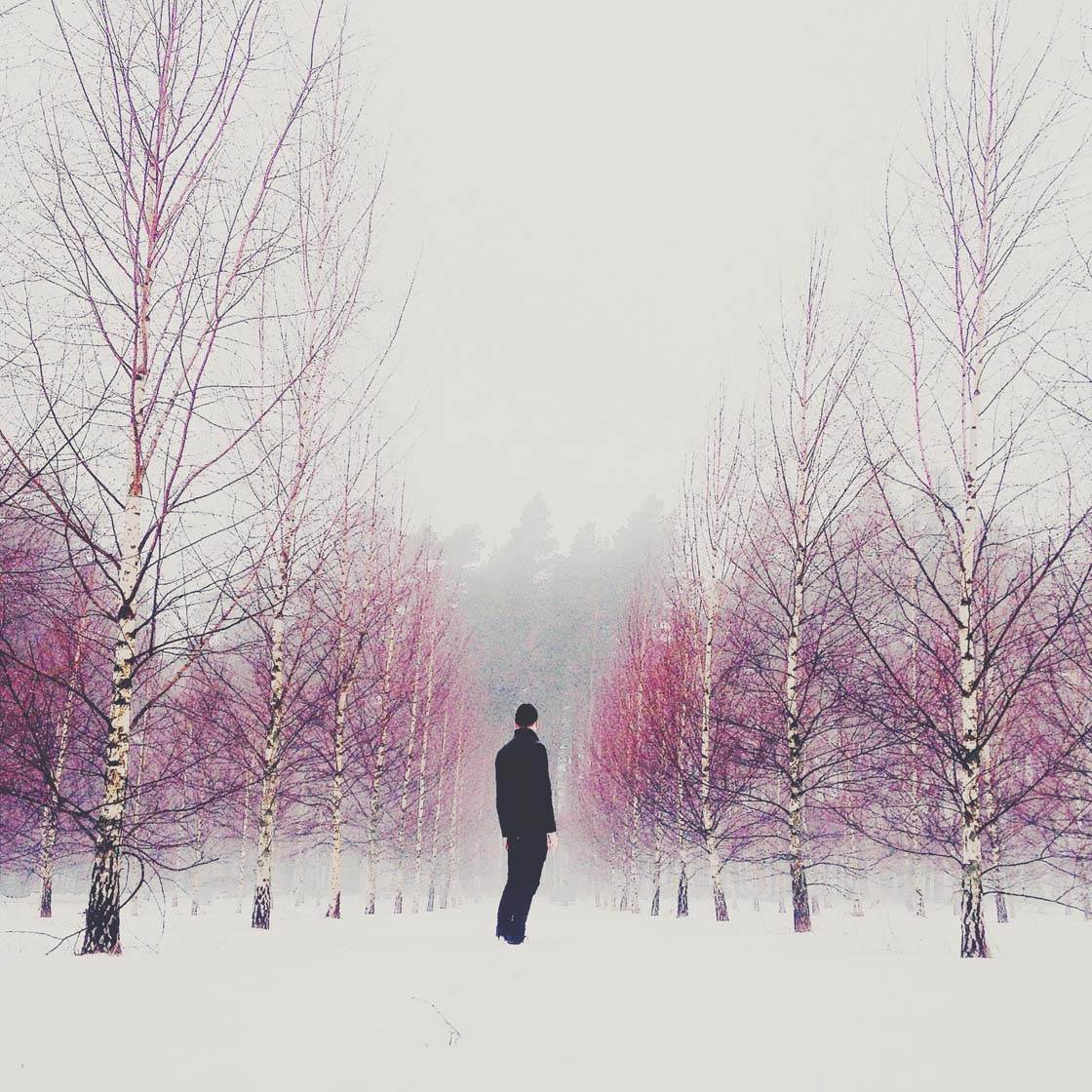
No matter what type of landscape you’re shooting in, always work towards finding some way to create a sense of depth. This will make your photo more engaging, and ultimately more memorable to the people who look at them.
So now you know how to take great landscape photos, get out there and explore with your iPhone to see what amazing pictures you can create!


Great pictures and good ideas!
Happy to hear you enjoyed this and found it useful 🙂
I can make a recommendation to you. Place your object off-center for a more dynamic composition. Have your road for eaxample run diagonally to the object.
Thank You,,,,,,,,,, simple, to the point and useful.
Glad to hear you found these tips helpful Pat 🙂
Excellent article.
Happy to hear you enjoyed these tips Barbara 🙂
john kelley
Landscape is such a vast subject – certain images posted could be improved by the prominent point of interest placed off-centre. Landscape demands so much consideration on the juxtaposition of objects in the screen – and points of colour in the image – get this right and your photos will inspire!
Mind blowing pictures! Awesome photography!
Glad you enjoyed these photos Ravi! 🙂
Easy explanation to an amateur with some great photo shoots…. Simple awesome …
Great to hear you found these tips helpful Naveen 🙂
i’ve always been afraid of Landscape photos. I would be too close or too far away. Thanks for the tips. I’ll go out and try a few on this sunny day